10 Days in Italy: A Complete Itinerary for First Timers
One thing I don’t think people really understand – I certainly didn’t – before they learn more about Italy is how diverse Italy is from a historical, cultural, and political perspective. Italy is one of the youngest countries in the European Union, having only been unified in 1861.
Of course, it’s hard to picture that given our conceptions about the Roman Empire and their control over the Italian Peninsula, but for the past thousand years or so, it has been a smorgasbord of various city-states and independent republics that were constantly vying for power.
And they all had different political structures, cultural quirks, and, perhaps most importantly, food and drink specialties.
Over the course of your time in Italy, we hope that you’ll get a taste for what makes each region that you spend time in special, and we’re here to help you figure out how to spend 10 days exploring that regional diversity, seeing the main sights along with some less-visited places (Bologna!) that we love.
Anyway, our point is that Italy is amazing. We love Italy, and you should go (and be smart about how you structure your trip).
If you’re planning a trip to Italy with 10 days to spend and you’re not sure where to start, this guide is for you!
We’re going to give you our version of the best way to spend 10 days in Italy for the first time all based on our own experiences over the course of multiple trips including Alysha’s six month stint living in Rome, and a combined two months in Italy over the past few years (across four trips).
As if that wasn’t enough, Matt has been to Italy twice in the past two years, including a trip this past spring with family (who were first time visitors to Italy and Matt used as guinea pigs for this guide).
As you can pretty clearly see, we can’t get enough Italy in our lives.
In this guide to planning your 10 day Italy itinerary, here’s what we’re going to cover:
- Exactly how to plan out your trip, including what stops to make, what route to take, and all the important logistics you need to know
- A guide to what to do, where to stay, and how to get there for each stop on the itinerary
- Options for shorter and longer trips if you have more or less time in Italy
Throughout the guide, we’ll share our favorite finds and experiences in Italy based on our multiple trips (four trips in the past five years spanning two months) to help you plan your unforgettable trip.
Sound good to you? Let’s get into it.
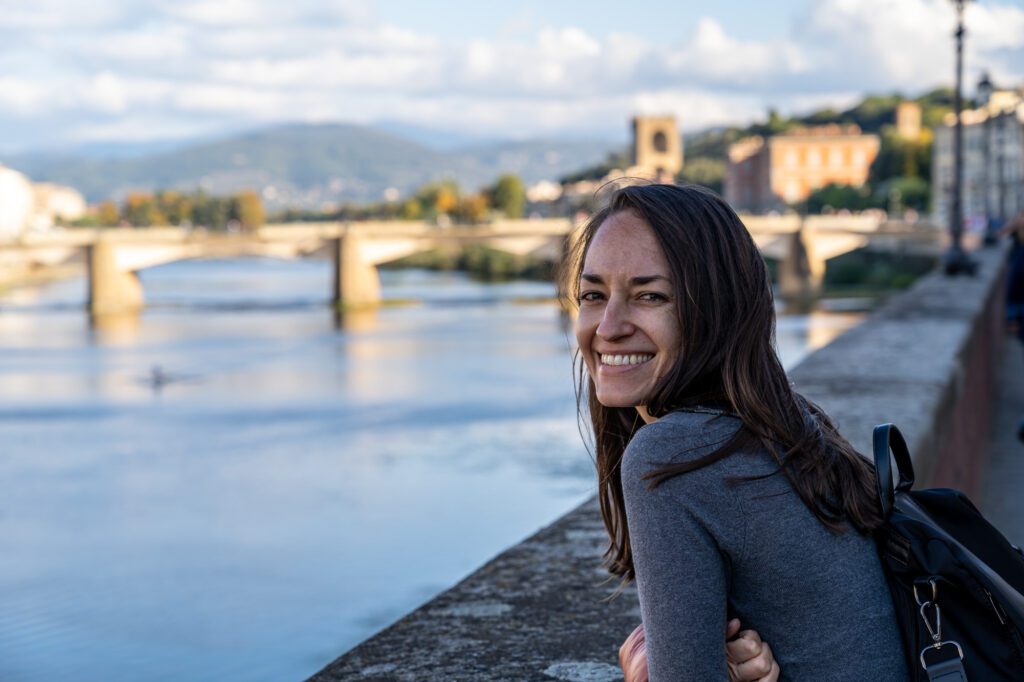
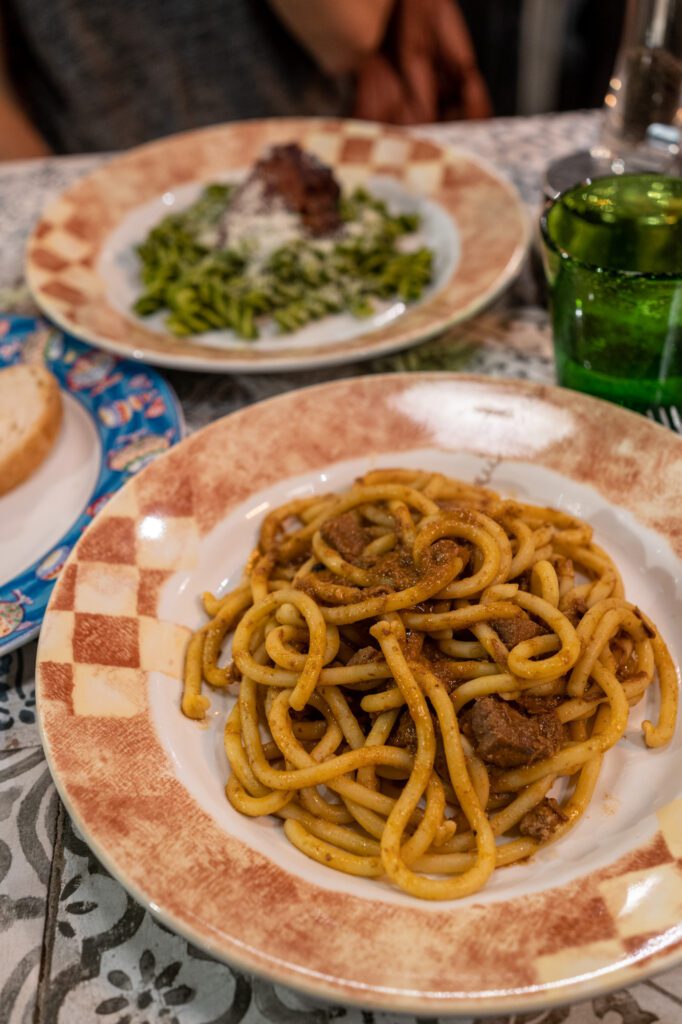

Disclaimer: Some of the links in this post, like hotel links, are affiliate links, meaning at no additional cost to you, we make a little bit of money if you click through and book. That being said, we would never recommend something to you that we don’t stand behind 100%.
How Much Can You See With 10 Days?
The first thing we need to do as we get into exactly how to plan your itinerary is set expectations about what is possible with 10 days.
Italy is a big, big country, and 10 days is barely enough time to scratch the surface. 10 days is a great start to exploring Italy, but you’re going to have to pick and choose what to focus on.
I mean, I (Matt here!) have spent a full two and a half months in Italy over the past several years and I STILL haven’t made it to all the places I want to make it to.
We’d urge you to resist the temptation to continuously add places to your itinerary until you’re scooting around Italy like a madman (or madwoman), changing cities every day and sprinting between museums.
We’ve been there. Trust us.
We completely understand the temptation, have fallen victim to it many times, and are here to tell you that your trip will be much more relaxing, rewarding, and memorable if you spend more time in fewer places.
10 days is enough time to see some of the main highlights (like Rome and Venice), connect with locals and see their cities and countries through a different lens, eat some great food and drink some excellent wine (duh), and get a taste for what makes Italy special (and to populate your list for places you want to go on your return trip!).
We’ve also found time to visit some of our favorite underrated, less visited cities in Italy – namely Bologna (our favorite city in Italy) and Verona – along the way.
P.S. We have an entire guide full of tips for visiting Italy for the first time that we’ve compiled over our time in Italy that covers itinerary planning, logistics, and cultural differences. We think you should read it to make your trip smoother and more have a more immersive experience.
How to Structure Your Itinerary
As we’ve traveled more and more over the past several years, we’ve come to realize that we have a strong perspective on how to approach a longer trip (10+ days).
The first thing we want to say here is that you should dedicate at least 2-3 days to each of Italy’s big cities like Rome, Venice, Florence, or Milan.
Trying to do any of those cities in a day is going to be mayhem, and you will inevitably be checked out and ready for a nap in the early afternoon as you’re heading to your next attraction.
The reason that multiple days are better is to split up the main attractions.
Take Rome, whose two main attractions are the Colosseum and the Vatican in our minds. Trying to do those two things on the same day is going to sap you of all of your energy, and you won’t be able to focus on whichever one comes second.
Always always always split up those bigger attractions so that they fall on separate days when you can!
We also believe that it is almost always better to choose a home base for a longer period and do day trips from there rather than moving around every day or two.
In this case, with 10 days, we’d pick a maximum of three cities you want to use as a home base, and divide your time roughly equally between them.
For your first trip to Italy, we think those three cities should be Rome, Florence, and Venice.
Those three cities are great places to visit in their own right from a culture, history, and food perspective, but also are easily connected with Italy’s high speed train network. Plus, Florence in particular makes for a great home base for exploring multiple other places via day trip.
Where to Start and End Your Trip to Italy
The next thing to think about as you’re planning your trip is where you’re going to start and end your trip to Italy.
The first thing to know is that, if you can, you should book an “open jaw” flight – a flight that arrives in one city and departs from another – to cut down on backtracking and extra travel time.
If you follow the itinerary below as written, you’ll want to fly into Rome’s Leonardo da Vinci–Fiumicino Airport (FCO) and fly out of Venice’s Marco Polo Airport (VCE).
Both are big international airports, but will likely require a connection if you’re coming from outside of Europe (usually that connection will be London, Amsterdam, Paris, or Frankfurt, but it depends on the airline).
The other good international airports in Italy are in Milan, where there are actually two options, Malapensa (MXP) and Linate (LIN).
How to Get Around Once You’re in Italy
After you’ve arrived in Italy, the next thing to talk through is getting around within Italy.
The first thing we want to say is that you really, really don’t need to rent a car to do this trip.
In fact, we’d advise against it if you’re following the itinerary below as written (or close to it) because the car is going to be more of a hindrance than help in the cities, which is where you’ll spend most of your time (doing day trips from your home base in each city).
The second thing to know is that Italy has a robust train network, and that’s what you should use to get between cities.
You could fly between cities on this itinerary, but we highly recommend taking the train for a more pleasant and often more efficient journey.
We LOVE train travel (especially high speed train travel), and it is by far the most efficient way to connect the big cities.
A few things to know about train travel in Italy:
First, there are (essentially) two types of trains in Italy – high speed and regional – and they operate differently.
High speed trains are more expensive, significantly faster, and less flexible.
To save time since you’ve only got a limited amount of it in Italy, you’ll want to take the high speed trains between cities.
You’ll want to book your ticket as far in advance as possible, which usually will save you some money, but will be less flexible. If you want the flexibility, you’ll have to be prepared to pay a little extra.
Regional trains are slower, cheaper, and more flexible. They’re usually for connecting nearby smaller cities to each other (for example, there’s a regional train between Florence and Pisa).
You can buy these tickets when you arrive at the station, and they’re more flexible. You need to make sure you validate them before boarding.
We’d take high speed trains between Rome and Florence, and between Florence and Venice.
For some of the day trips from Florence, regional trains will do.
The website for booking trains directly is Trenitalia, and it’s actually fairly streamlined and user-friendly. They even have a (mostly) functional app!
The only hiccup is that you need to know the name of the train station in Italian (e.g. typing “Venice” doesn’t work – you have to type “Veneto,” which is just Venice in Italian).
If you’re not comfortable with that, we’ve used Omio often to book trains around Europe, which is generally a far more streamlined experience (in English, no less).
How to Plan an Incredible 10 Day Italy Itinerary
Here’s what the itinerary you’re going to find below looks like written out.
- Day 0: Arrive in Rome
- Day 1: Rome
- Day 2: Rome
- Day 3: Rome
- Day 4: Train to Florence + Explore Florence
- Day 5: Florence
- Day 6: Day Trip to Bologna
- Day 7: Day Trip to Siena
- Day 8: Train to Venice (early morning)
- Day 9: Venice
- Day 10: Venice + Fly Home
Obviously, you’ll have to massage this itinerary a little bit to make it work with your specific flights.
We’re assuming you have 10 full days in Italy, not including the half days that would be dedicated to your arriving and departing flights.
Note that this is very much a classic Italy itinerary that is meant to help you figure out the best way to see the main highlights in Italy with ten days (according to, well, us, who have spent a lot of time in Italy over the past several years – more than two months in total!).
Obviously, there is a LOT to see in Italy, and we have plenty of ideas on how to make changes to this itinerary.
For example, you could do a southern Italy itinerary that focuses more on Naples and the Amalfi Coast after spending a few days in Rome, or a northern Italy itinerary that focuses on the Dolomites, Lake Como, and Milan. It all depends on what you’re looking for.
You’ll find some of our ideas in the “with more time” section below, which you can use to make changes to your itinerary based on your specific style and needs.
Days 1-3: Rome
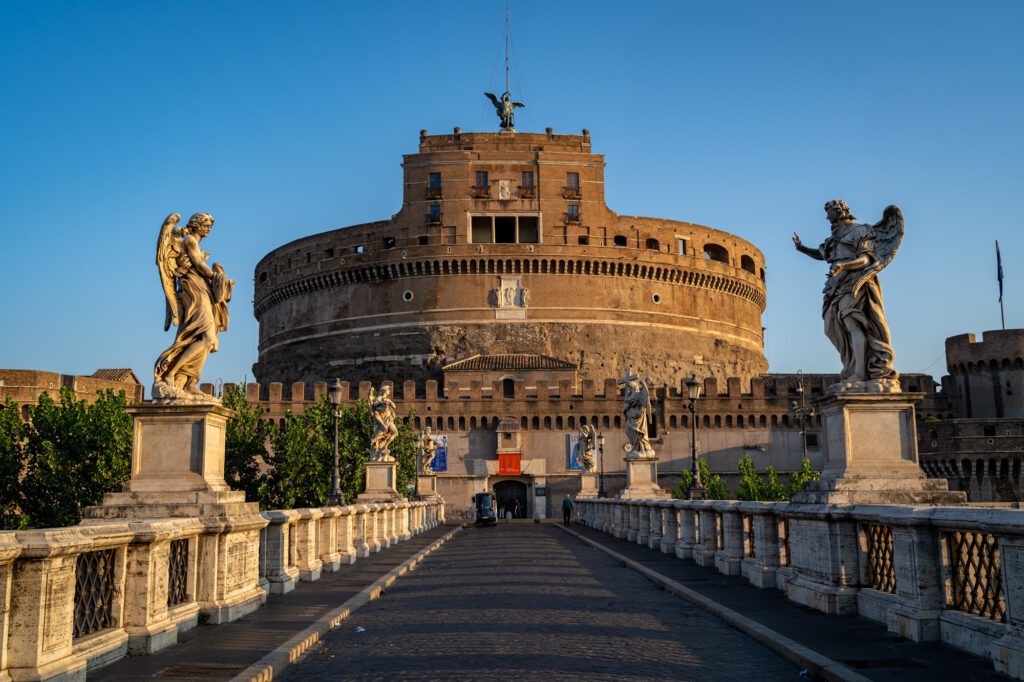
Ah, Roma. Collectively we’ve spent quite a bit of time in Rome now. I (Matt here) have been to Rome five or six times (it’s hard to keep track at this point!), including a recent trip in the spring of 2024.
Alysha has been a similar number of times, including a six month stint living in Rome.
We love Rome, and I love talking to people about Rome because many people use adjectives like “dirty” and “chaotic” to describe it, and they mean it in a negative way.
And, to be honest, those adjectives are almost 100% deserved.
But, for us, that’s part of the charm of Rome. We’re city people, and the sheer energy that you feel walking around Rome is similar to the energy you feel wandering around New York City, though significantly less overwhelming.
There is a ton of history in Rome, and it’s a great place to learn about not only the Roman empire, which was centered in Rome, but also the modern state of Italy, which is one of the newest countries in Europe having only been unified in the 19th Century after centuries of being a collection of independent states with different laws, languages, and cultures.
We also really like the food culture in Rome. Contrary to what you’d expect if you’re picturing the opulence of Ancient Rome, the ingredients used in modern Roman cuisine are much more modest.
The four Roman pastas – Carbonara, Amatriciana, Cacio e Pepe, and Alla Gricia – are all very rustic, as are the fried artichokes, supplì (fried rice balls similar to arancini), and pizza al taglio that make up the other main staples in Rome.
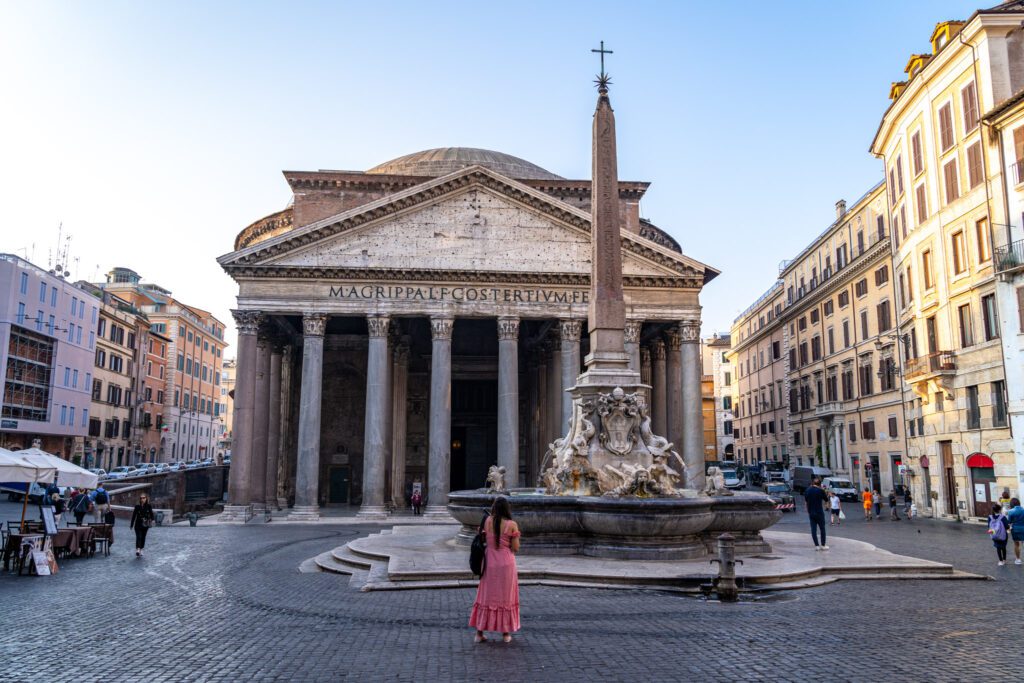
Getting From the Airport to Rome
In all likelihood, you’ll be flying into Rome’s Fiumicino Airport (FCO), which is the busiest airport in Italy.
The easiest way to get from the airport to the city center is going to be taking the Leonardo Express, a direct, air conditioned train that runs directly from the airport to Termini Station, Rome’s main train station.
The advantages here far outweigh the disadvantages. You’re not subject to the near-constant traffic in Rome, it’s clean, comfortable, and affordable, and it’s easy to find in the airport.
The only downside is that, depending on where you’re staying, you might need to take a taxi or bus from Termini Station to your hotel.
If you’re coming from within Europe (especially on a budget airline), there’s a chance you’ll come into Ciampino Airport (CIA), which is far more limited in terms of ways to get to the city center, but takes about the same amount of time in the end if you take the Ciampino Airlink.
What to Do in Rome
Here are some things that we think you definitely shouldn’t miss while you’re in Rome.
Our most important tip here is to not do multiple big attractions (e.g. the Colosseum, Vatican, or Borghese Gallery) on the same day, because you will be exhausted by the time you START the second attraction.
That’s also part of the reason why we recommend 2+ days in each city – so you have time to split things up and do the main attractions on separate days.
Obviously, Rome is a huge, complex, history-filled city, and there is plenty more to do, see, eat, and drink in it.
For more, we’d point you to our 4 day Rome itinerary and our guide to the best things to do in Rome (for first timers), which have all of our favorite things to do, see, eat, and drink in the Italian capital.
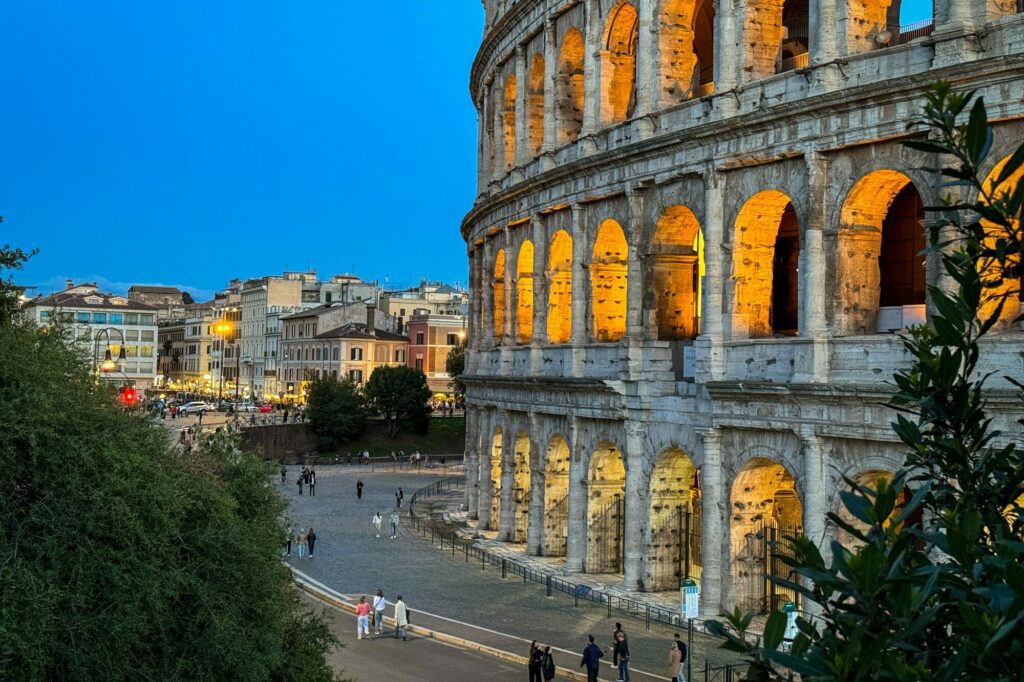
The Colosseum & Roman Forum
The Colosseum and Roman Forum are the first of the two big tourist attractions in Rome, and it’s something you’re not going to want to miss.
First of all, we’d highly recommend heading to this garden early in the morning or late at night for an excellent view (and picture) of the Colosseum, and this viewpoint for a great view of the Forum from above.
Second of all, if you only have time or budget for one guided tour in Rome, it should probably be here.
It’s hard to wrap your head around what you’re seeing as you walk through the mostly crumbling buildings, and a guide will help you contextualize and comprehend the history you’re seeing, which will lead to a much richer experience in the end (which is what we’re always looking for!).
We have personally done both this guided tour, which is a great dive into this rich piece of history, and also this nighttime VIP tour, which takes you under the floor of the Colosseum at night, when it is MUCH quieter than the daytime tours (but, crucially, DOES NOT visit the Forum).
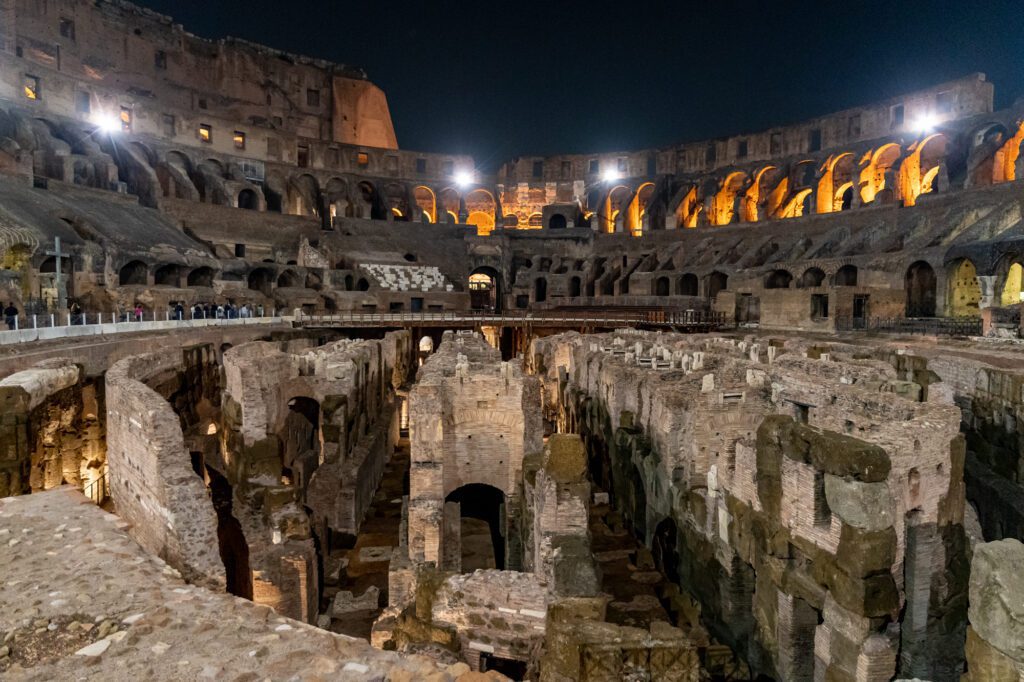
Both are with Walks of Italy, our favorite tour company in Italy – you can read more about our experience on the Colosseum tour that challenged our preconceived notions.
We have an entire separate guide dedicated to visiting the Colosseum with all the important information you need to know – like what to see, how to get tickets, and the best time to visit – which you should read for far more detail than we have here.
Marvel at the Vatican Museums (and St. Peter’s Basilica)
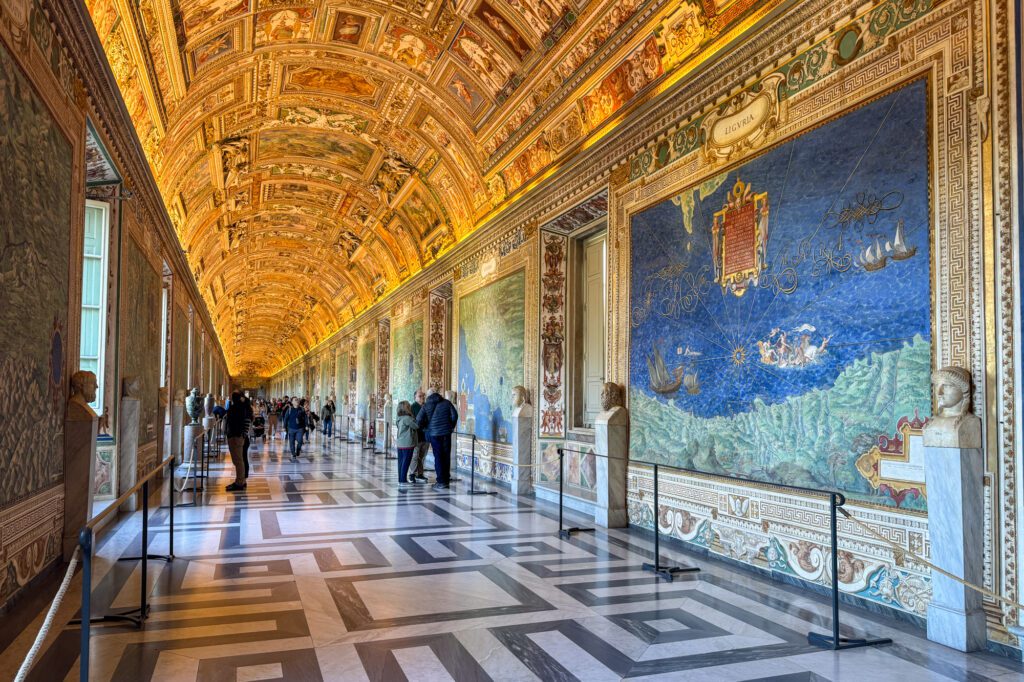
I have now visited the Vatican Museums and St. Peter’s Basilica four separate times across multiple trips, and I can confidently say that I still don’t think I’ve seen everything.
The Vatican Museums is a truly mindblowing collection of art that the Catholic Church has either accumulated or commissioned over the course of its centuries as one of the main power centers in Europe.
There are two aspects here – the Museums (which includes the Sistine Chapel) and St. Peter’s Basilica, and you’ll want to see both.
It’s going to take the vast majority of the day to do both, because it’s A LOT. The other thing we’d say is that you’ll want to get in as early as humanly possible, because it’s EXTREMELY busy and claustrophobic at peak times.
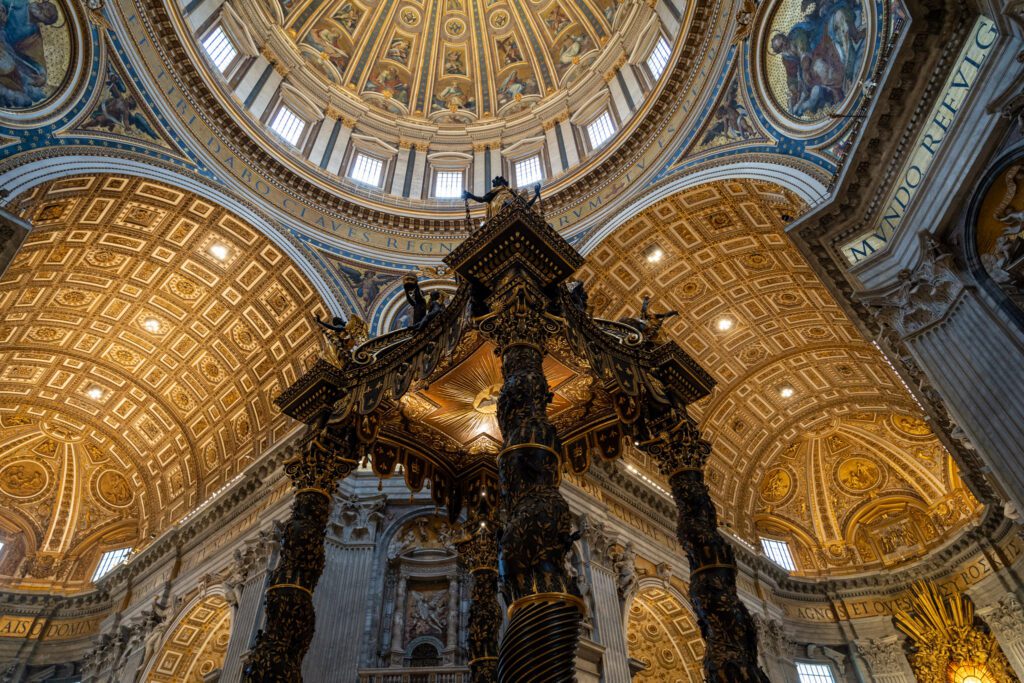
Book your entry tickets well in advance, and select the earliest time slot of the day.
On my last trip, I did this early morning tour with Walks of Italy, which was great.
However, it is worth noting that there will be other people in the Sistine Chapel due to changes that the Vatican has made to visitor hours over the past few years – if you truly want to be alone, you’ll have to splurge on this tour where you’re there when they open the doors to the Sistine Chapel.
We have an entire guide dedicated to visiting the Vatican, which you should read for far more detail around how to plan your trip.
Walking the Centro Storico (in the early morning!)
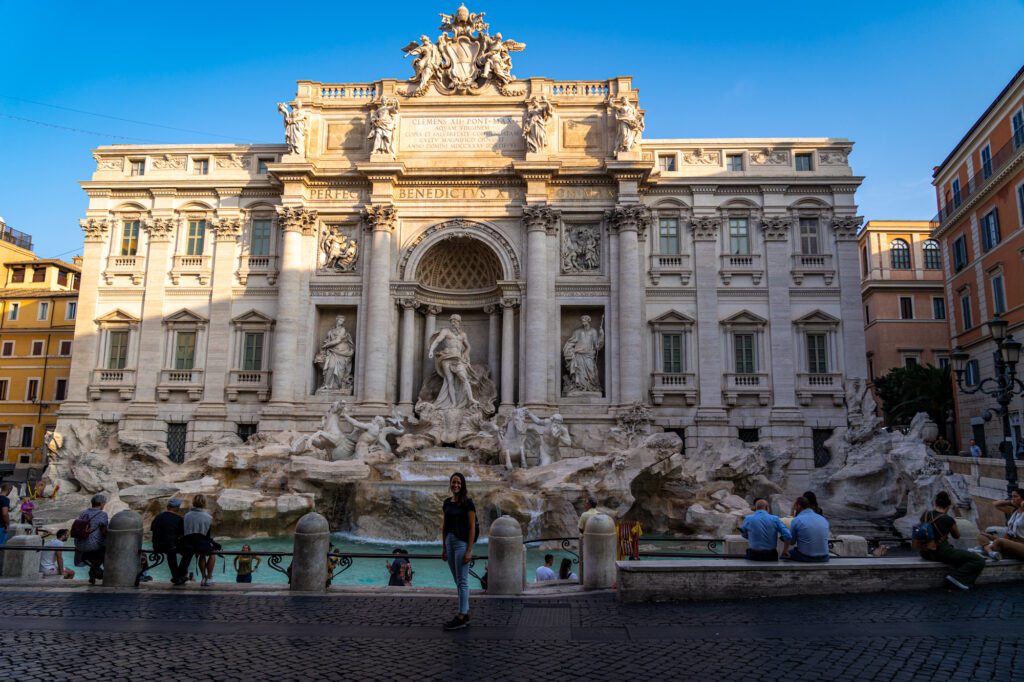
The Centro Storico is Rome’s historic center (though most of the ornate fountains and buildings you see today are actually from the Baroque period in the 17th Century, ish).
It’s a treasure trove of the most famous sites in Rome, including Piazza Navona, Campo de’ Fiori, the Pantheon, and, of course, the Trevi Fountain.
Once again, this is something you should do as early in the morning as you possibly can because otherwise, the cobbled, narrow streets in this part of the city are packed wall-to-wall with visitors all wanting to see the same things you do.
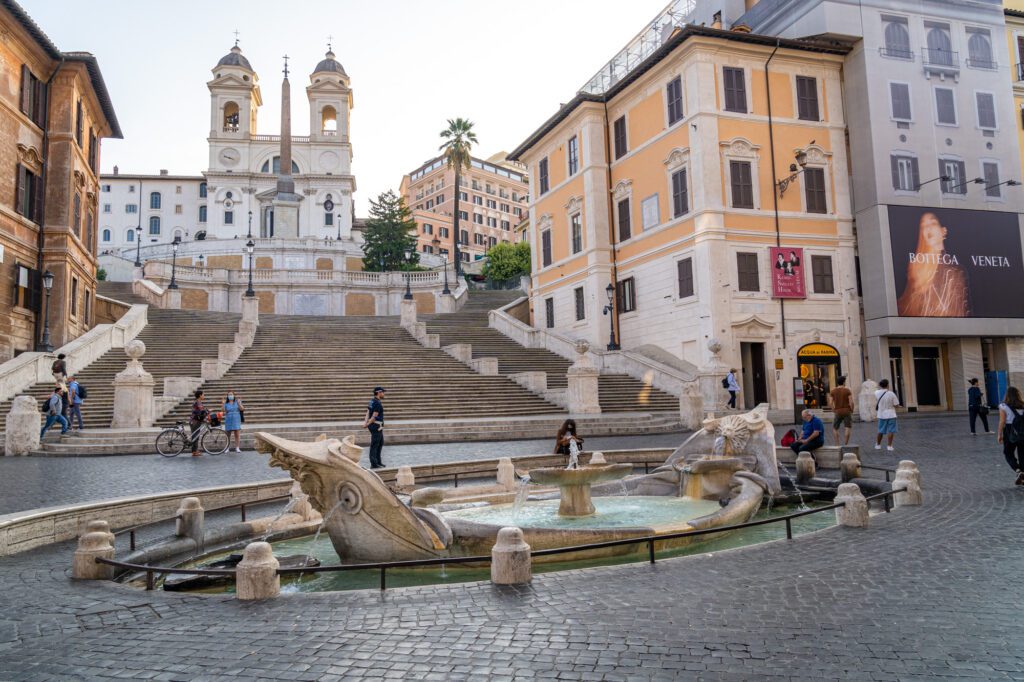
Get out here between 7am and 8am and it’s a much different story.
Here’s a route that we have done multiple times, and gets you to the main sites (start from the northern end, and don’t skip Terrazza del Pincio for excellent views of the city).
Along the way, stop at either Tazza d’Oro or Sant’ Eustachio for a quintessential Italian coffee experience (stand at the bar, order a cafe or cappuccino, and enjoy the ruthless efficiency of the baristas).
Spend an Evening in Trastevere
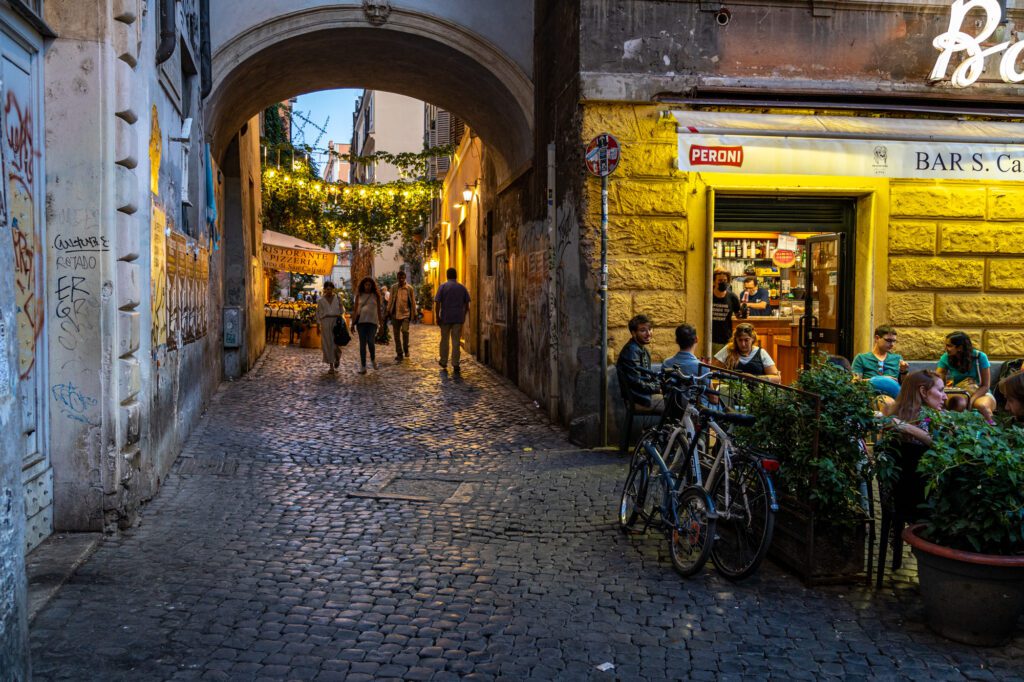
Trastevere is our favorite part of Rome.
It’s all narrow cobblestone streets, charming piazzas, a lively atmosphere, and great places to eat and drink.
We think it’s at its best in the evening, when it’s packed with people wandering the streets, eating on one of the many al fresco patios, and hanging out in its many piazzas.
A few favorites: Fatamorgana for gelato, Les Vignerons for a nice selection of beer and wine by the bottle, Supplì Roma for a Roman classic (similar to arancini in Sicily), and Enoteca Cuverie for a nice, quiet wine bar in a quieter part of the neighborhood.
Seek Out the Best Views in Rome
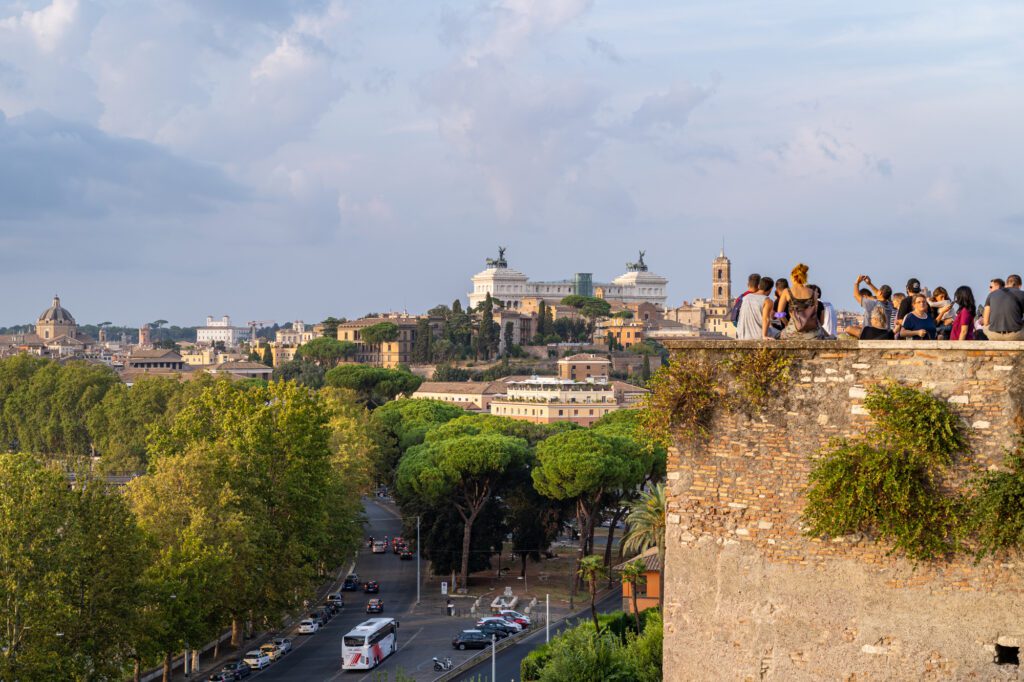
One of our favorite parts about Rome is the view from above, because it’s a sea of domes as far as the eye can see (almost literally).
We have a couple of favorite viewpoints, including the previously mentioned Terrazza del Pincio (here on Google Maps).
We also really like the view from the Giardino degli Aranci (“Orange Garden” – here on Google Maps) and from the top of Castel Sant’Angelo (which is definitely worth a visit – here on Google Maps).
One last viewpoint is the walk up to Piazza Garibaldi, which is a piazza above Trastevere with excellent views of the city (here’s a route that takes you to a couple of other nice sites along the way).
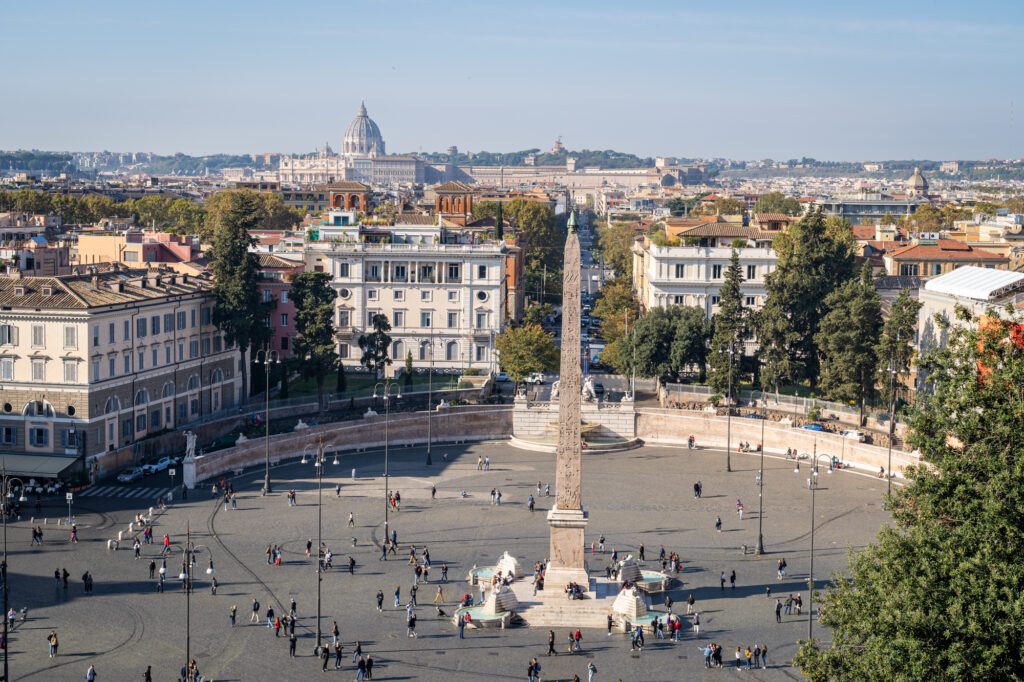
Where to Stay in Rome
We’ve spent multiple weeks in Rome over the past few years, and Alysha lived there for six months in college, so we think that we have a better than average working knowledge of Rome’s neighborhoods, at least compared to people who have only spent a few days there.
In our minds, there are really only two options when it comes to neighborhoods we like to stay in.
For all of the details behind this summary below, we’d point you to our more detailed guide to the best places to stay in Rome, which has a complete neighborhood guide for all of the neighborhoods mentioned below.
The first (and best for first timers, we think) is the Centro Storico, which is the charming historic center of Rome – specifically the southwestern end between Campo de’ Fiori and Piazza Navona.
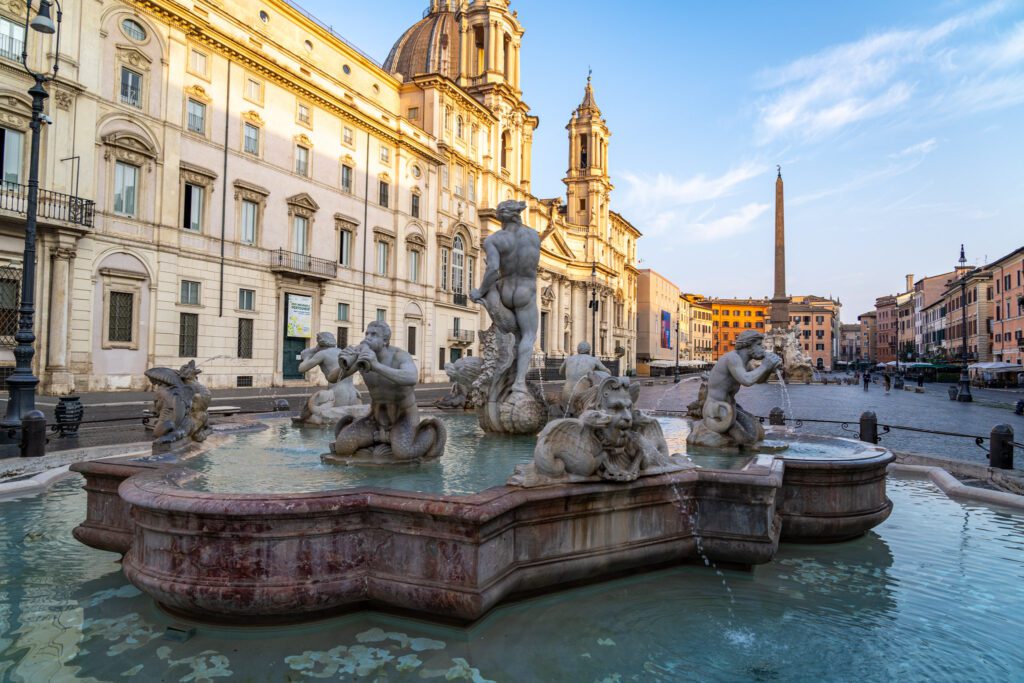
Many of our favorites in Rome – our favorite walk, our favorite Italian-style coffee bar, our favorite wine bar – are tucked away in this network of cobblestone streets, and it’s about as central as you can get.
The downside is that it is absolutely packed with tourists between 10am and 7pm, and it’s going to be a little more expensive (you’re paying for the location).
We spent a week here recently, and we wanted an apartment with a little more room to spread out (plus, a kitchen) and stayed at these lovely apartments, which we’d wholeheartedly recommend.
It’s in a great location too – just 10 minutes on foot to the center of all the action.
The second area to consider, and our absolute favorite neighborhood in Rome, is Trastevere.

We stayed there for the last leg of our long trip to Rome a few years ago (after Matt had stayed there before) and fell in love all over again.
Charming cobblestone streets, narrow alleyways with ivy-lined buildings, cafes spilling out into piazzas at the foot of churches. It’s the most romantic part of Rome. It also has some of the best nightlife in Rome.
We stayed at Horti 14 Borgo on our last trip together (Matt has since been solo in the spring of 2024), which was a bit of a splurge for us, but the friendly service, incredible breakfast spread (which is included), and quiet location made it worth it.
Days 4-7: Florence + Day Trips to Bologna & Siena
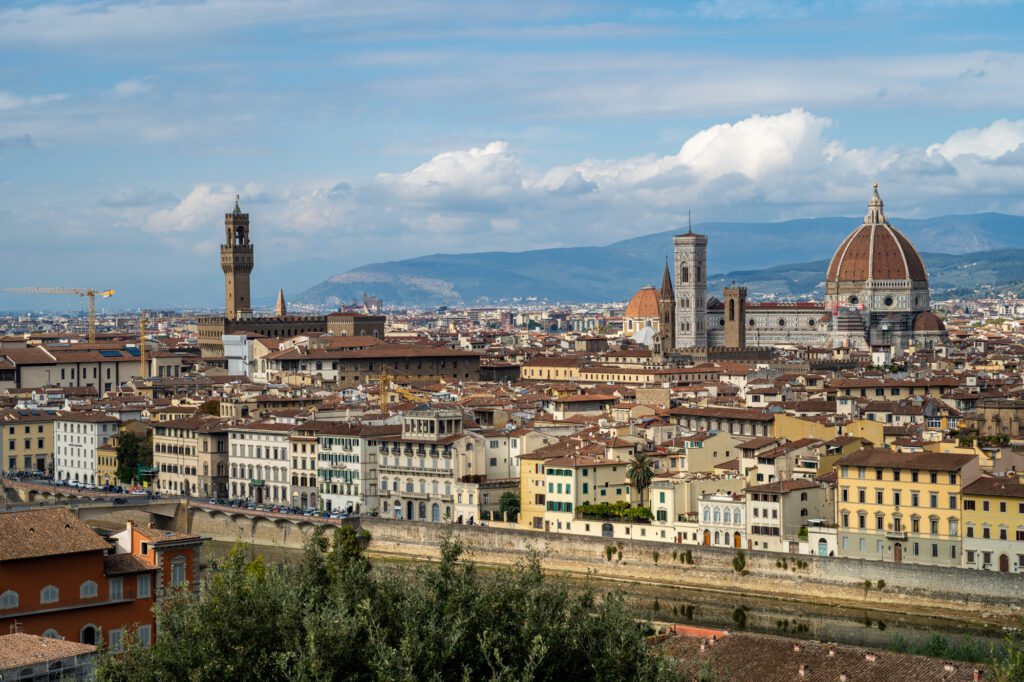
Florence and Rome as the first two stops on this itinerary provide you a nice contrast, because we think they’re very different cities despite being only an hour and a half apart by high speed train.
Rome is massive, sprawling, and chaotic. Florence is compact and busy, but doesn’t have the same “am I going to get run over by a scooter crossing the street” vibe that Rome does. It’s a much more organized, controlled chaos, if that makes sense.
The main difference in our view is the fact that, starting in the 15th and 16th Centuries, Florence was one of the wealthiest cities in the world, and was on the forefront of the Renaissance (if not the movement’s birthplace). Contrast that with Rome, which has not been a terribly wealthy city in the past 1,000 years (if not more).
The difference between Rome and Florence is kind of like the difference between the Colosseum and Roman Forum and the Vatican Museums and St. Peter’s Basilica.
The first is a big important historical site, but it’s relatively modest in its decoration (as modest as a massive arena built a couple thousand years ago can be), the second is much more ornate and projects the obscene wealth that went into the commissioning of the various pieces of it.
The thing to keep in mind here is the fact that the relationship between wealth and art flows in that direction. Wealth brings the ability to commission the most famous artists in the world to create all the beautiful art you see in Florence today.
The result of all the wealth that flowed into Florence is a more modern city than Rome is, with incredible architecture that features more ornate decorations than Rome.
Plus, the collection of art in the city’s museums – the Uffizi Gallery and the Galleria dell’Accademia di Firenze (home of Michaelangelo’s famous statue of David) – is second to none, and it’s a great place to learn about how the Renaissance fundamentally changed art forever.
As we mentioned above, Florence is no less busy than Rome, but the compact nature of the city center means the same number of people are packed into a much smaller space.
Walking through all corners of Florence’s city center feels sort of similar to Rome’s Centro Storico in terms of being packed wall-to-wall during peak hours.
However, there are charming corners to be found around Florence (like across the river in Oltrarno), especially in the early morning and later in the evening when the tour buses and day trippers have gone home.
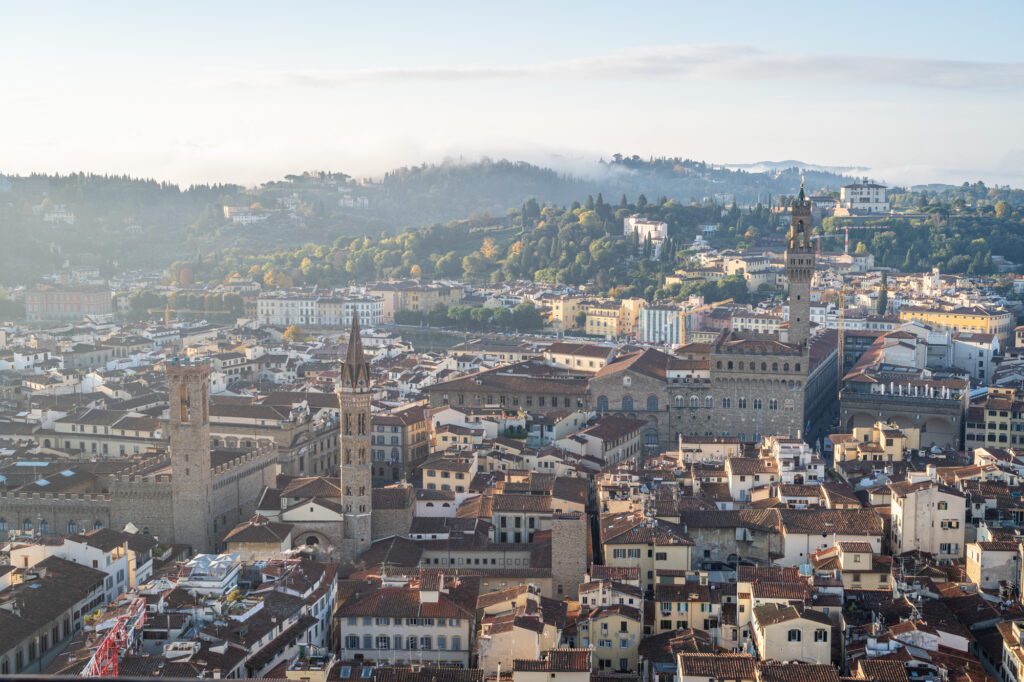
Getting from Rome to Florence
From Rome, it’s a quick and easy high speed train ride to Florence.
You’ll leave from Rome’s Termini Station, and you want to arrive at Santa Maria Novella in Florence. There are many, many trains running this route each day.
To maximize your time, you’re going to want to book either the “Frecciarossa” or “Italo” trains, which cover the distance in an hour and a half (versus three hours or so on a regional train line).
For your purposes, Frecciarossa (run by Trenitalia, the national rail company) and Italo (run by a private company) are essentially the same. Pick whichever one is best in terms of timing and prices.
What to Do in Florence
Here are some things that we think you definitely shouldn’t miss while you’re in Florence.
The Uffizi Gallery
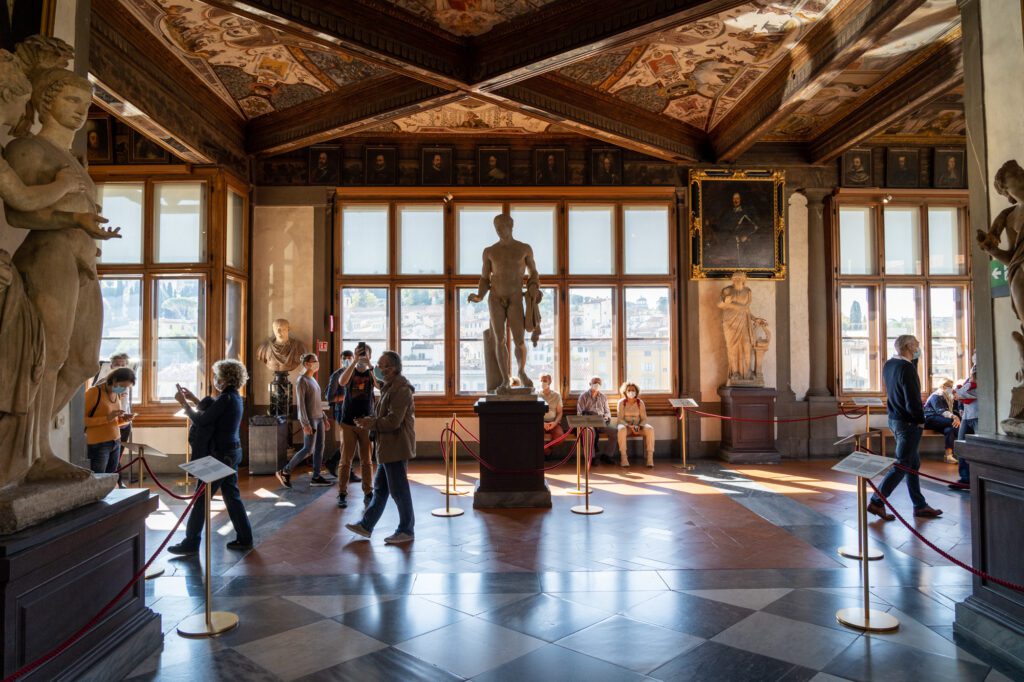
If you only have time for one tour in Florence, this is by far our top pick for the destination.
The Uffizi Gallery is a collection of art that focuses on the Renaissance, and it’s organized in (roughly) chronological order so that you can see the progression as the movement took hold of the artists working in Florence.
I’ve done it three times – once on my own, and two separate tours – and I’d highly recommend a tour here, if you can swing it.
A tour is going to help you understand the pieces themselves – there are countless details in each piece of art that we never would notice without someone explaining them to us – and how they fit into the broader story of the Renaissance and its impact on art history.
Of the tours I’ve done, this tour was by far the best crash course, and it ends inside the museum so you can spend more time, if you’d like.
The Statue of David (and the Galleria dell’Accademia)
I’ve read a lot of travel guides about the famous statue of David, which is housed inside the Galleria dell’Accademia di Firenze today, that say something to the effect of “just go see the replica of the statue in piazza della Signoria, which is free.”
And, if you have limited time, I would definitely focus on the Uffizi Gallery.
However, I do think that there is a lot of interesting work from Michelangelo in the Accademia that tells a story of how he worked his way to making the David.
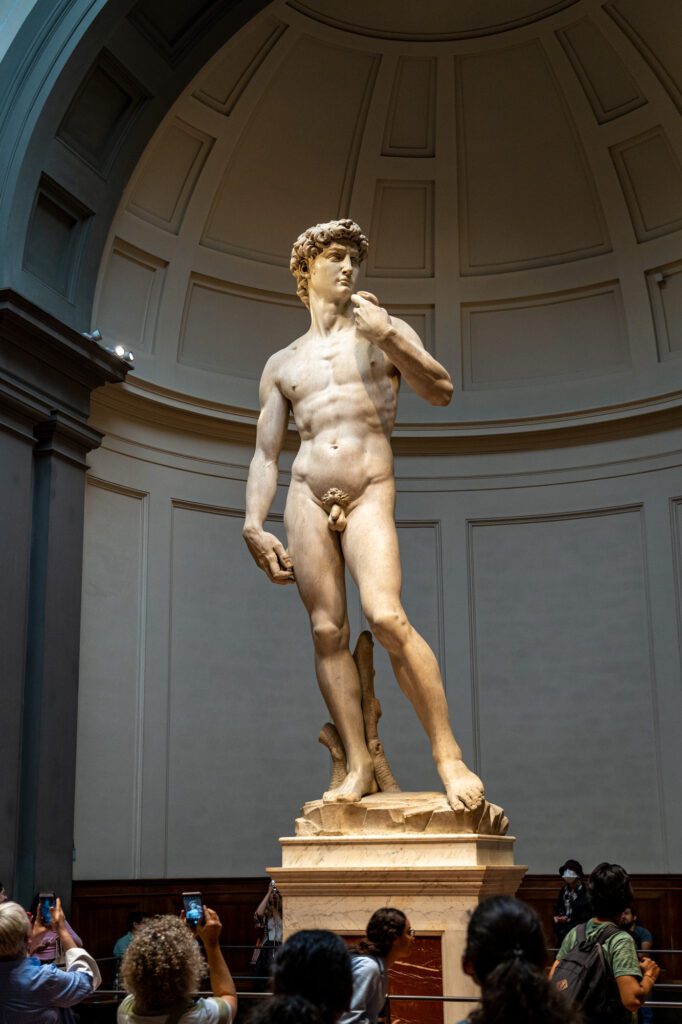
If you’re interested in that progression and the artist’s fascination with the human body, it’s worth spending an hour or two in the Accademia (and seeing the statue in that context here you can walk all the way around it is also cool).
Book your tickets well in advance – we’re talking as soon as you know you’ll be in Florence – to avoid standing in the ticket office line (you will still have to stand in the security line), which you can do on the official website.
I’ve also done this guided tour of the gallery with my mom, which allows you to skip the long lines (and get tickets if they’re sold out through the official site) and it was a great overview of the story of Michelangelo and his career leading up to the David.
The Duomo di Firenze
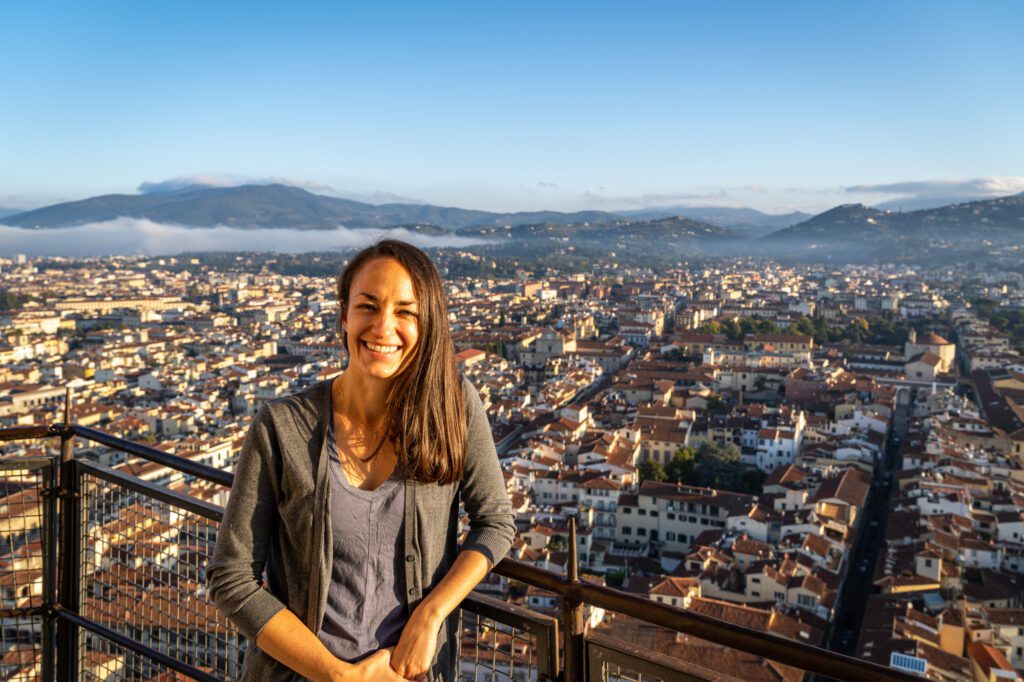
The Duomo di Firenze (also known as the Cattedrale di Santa Maria del Fiore) is massive, and is the centerpiece of Florence’s historic center.
It was constructed over the course of 150 years or so, starting at the end of the 13th Century and being consecrated in 1436 (though the facade wasn’t actually completely finished until the 19th Century).
There are multiple components to see here, and of them all, the one we’d focus on is Brunelleschi’s dome, which is impressive both on the inside and the outside, where you’ll find sweeping views out over the city of Florence.
The climb to the top of the dome does require a steep, narrow staircase with 400+ steps, which isn’t for everyone.
However, you get excellent views of the interior of the dome as you pass along a walkway just below the dome (which can get claustrophobic as people stop to marvel at the art).
You can buy tickets here, and if you want to climb the dome, you’ll need to get the “Brunelleschi Pass” – the only ticket that includes climbing the dome. Choose either the earliest or latest time slot for the smallest crowds.
Piazzale Michelangelo & Oltrarno
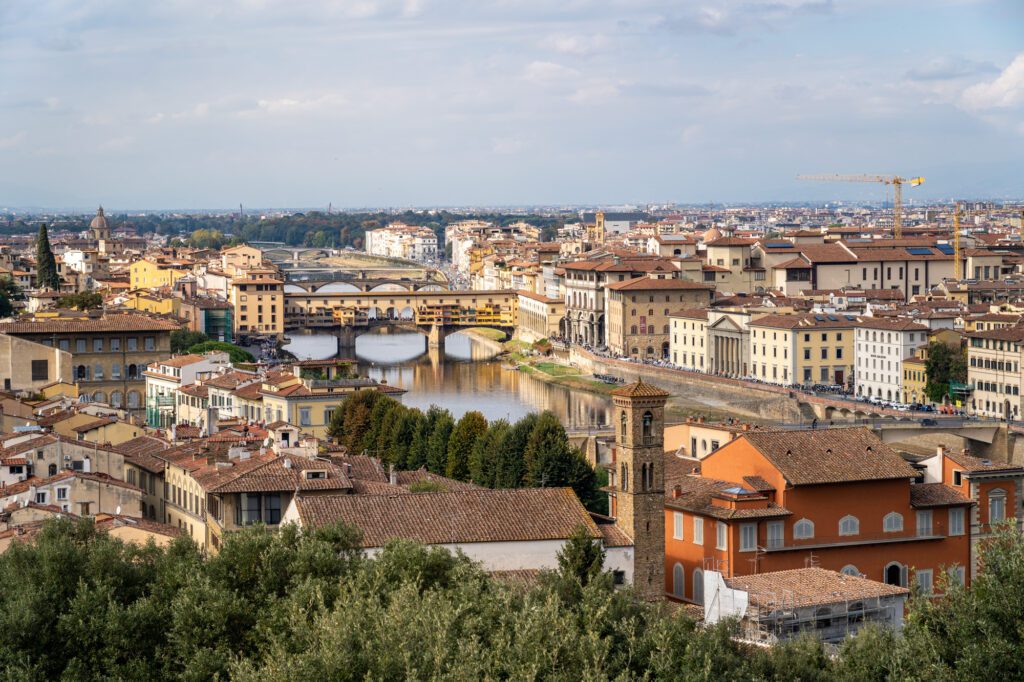
Aside from the view from the dome, this is probably our favorite view of Florence.
It’s on the other side of the Arno River (the river that runs through Florence), and it’s worth spending an afternoon exploring this less-visited neighborhood (though, it’s still Florence, so expect to see plenty of tourists).
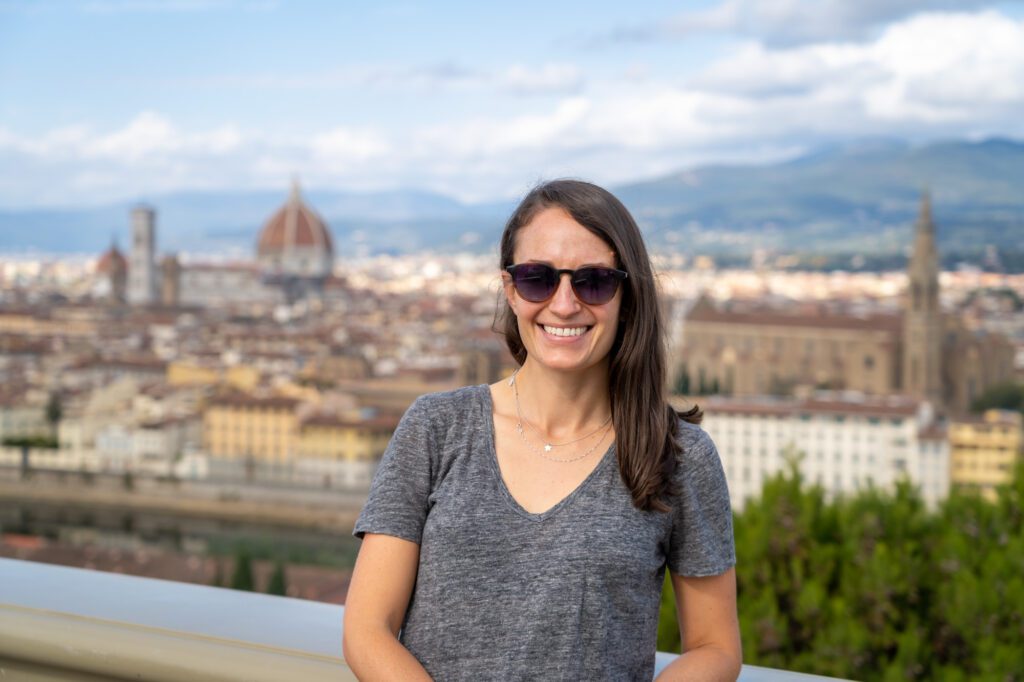
Our recommendation would be to walk up to the piazza and back down through Oltrarno, stopping for wine at Le Volpi e l’Uva (which has wine from all over Italy, including some local varietals), gelato at Gelateria Della Passera (recommended by Alysha AND our host at a local winery), and Ditta Artiginale for coffee (Matt’s favorite coffee on this side of the river) on your way down to Piazza Santo Spirito, the beating heart of the neighborhood.
Here’s a map of the route with our favorite stops on Google Maps.
Take a Day Trip to Bologna (Day Trip #1)
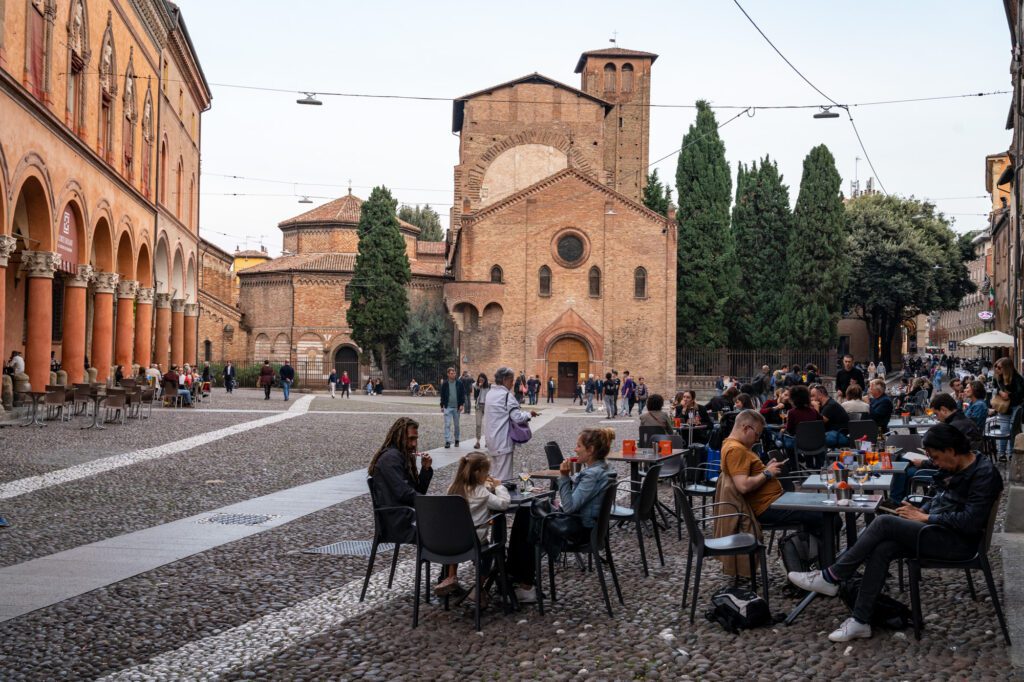
Bologna is the capital of Emilia-Romagna, the region immediately north of Tuscany, and it’s our favorite city in Italy.
First of all, the food is unparalleled. Bolognese, prosciutto di Parma, balsamic vinegar of Modena, parmesan-reggiano, mortadella – it all comes from the area around Bologna!
Plus, it is a gorgeous college town with a youthful energy and a TINY fraction of the tourists you’ll see in most other cities in Italy.
We love Bologna, and it’s the first place we’d add more time if you have it (for more, see the “with more time section” below the itinerary).
We have an entire guide dedicated to spending one amazing day in Bologna, which has all the details you need to plan your day trip (including how to get there, what to do and see, and what to eat and drink).
Take a Day Trip to Siena (Day Trip #2)
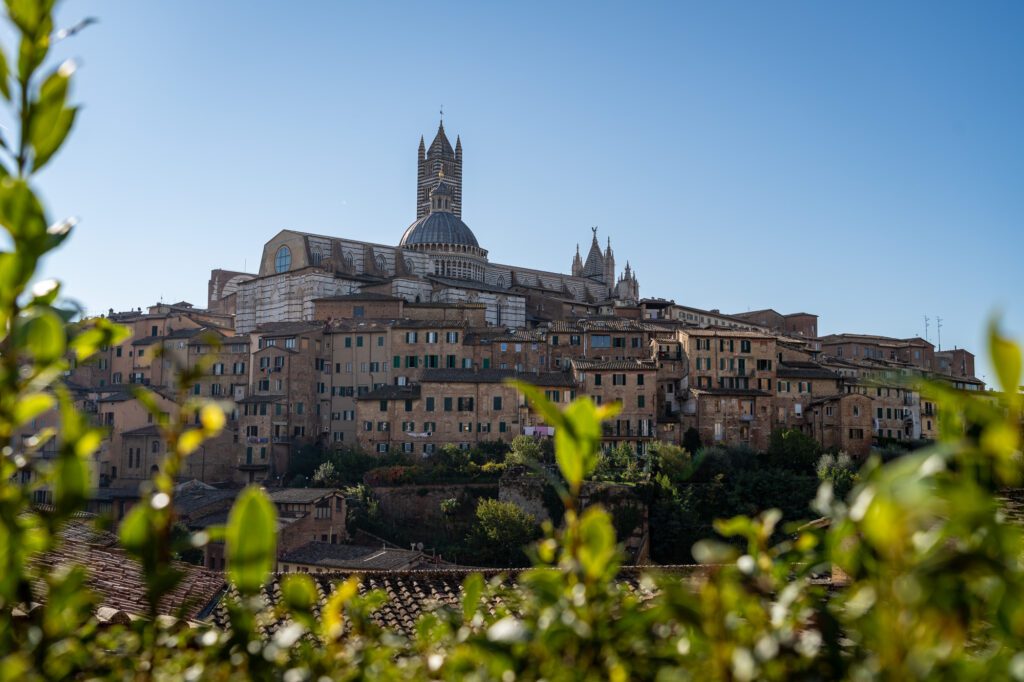
Tuscany – the broader region that Florence is the capital of – is known for its hilltop towns, which dot the landscape in the heart of Tuscany to the south of Florence.
Siena is, perhaps, the best example of this phenomenon. More importantly, it’s the most accessible by public transportation, and it’s an easy train (or bus) ride away from Florence.
When you’re in Siena, we definitely wouldn’t miss the Duomo di Siena (and its incredible tiled floor, if it’s uncovered for the season!), the climb up to the Facciatone (observation deck with great views of the cathedral), and this walking tour that we enjoyed, which gives you a great overview of the city and its history as a powerful city-state in central Italy.
Obviously, Florence is a complex, history-filled city, and there is plenty more to do, see, eat, and drink than the few bullets above.
For more, we’d point you to our 3 day Florence itinerary and our guide to the best things to do in Florence (for first timers), which have all of our favorite things to do, see, eat, and drink.
Where to Stay in Florence
Florence’s city center is pretty compact as big Italian cities go, which means it matters slightly less where you stay because it’s all within a 15 minute walk of the main sights.
For all of the details behind this summary below, we’d point you to our more detailed guide to the best places to stay in Florence, which has a complete neighborhood guide for the neighborhoods mentioned above.
However, there are two areas that stick out in our minds as our favorite neighborhoods in Florence.
We stayed in Santa Croce (also called Sant’Ambrogio) – the neighborhood where Leonardo Davinci grew up that is named after the church, where he is buried – and it’s a great option because it’s central, but far enough removed from the historic center to have fewer tourists (slightly) and better places to eat and drink.
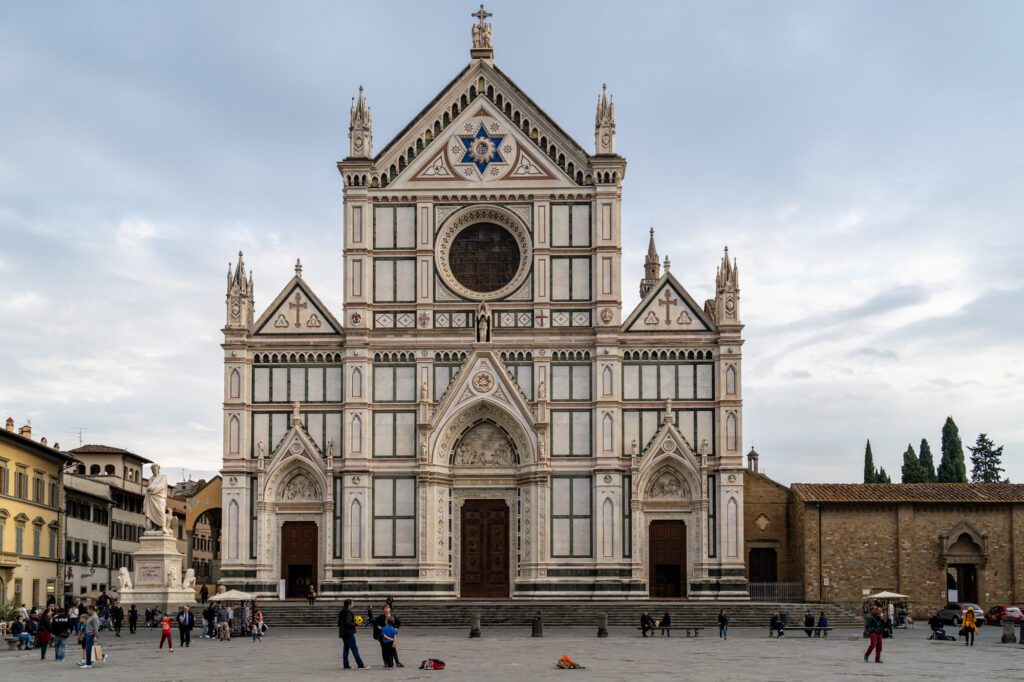
From there, you’ll be able to walk to the Duomo, Piazza della Signoria, and the river, all within 15 minutes or so.
We stayed at Pietrapiana Boutique Apartments, which were tucked away in a quiet courtyard away from the hustle and bustle with beautiful, spacious rooms. It was one of our favorite stays in Italy.
If you’re looking for a more traditional hotel (that’s also fairly affordable), look at the Eurostars Hotel a few blocks southeast of the church.
The other place we’d like to stay (though we haven’t stayed there yet) is Oltrarno, which is in many ways a more authentic version of Florence, where locals actually live.
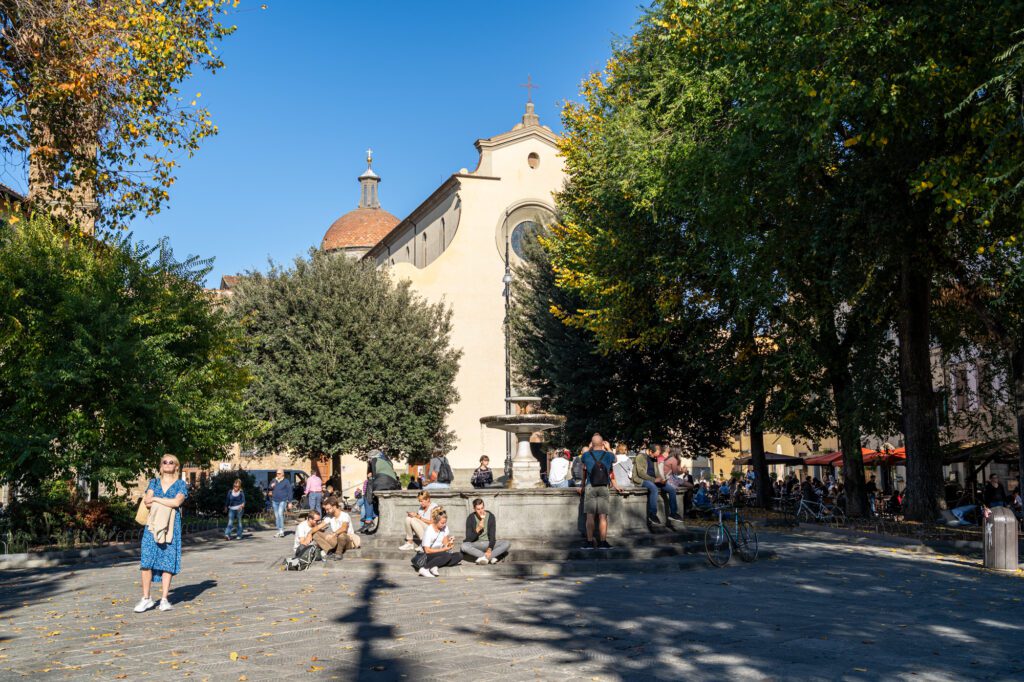
It’s just across the Arno River from the Centro Storico, which is where you’ll find a few of the best views in Florence (including the famous Piazzale Michelangelo).
The result is a vibrant neighborhood with a good selection of food and drinks, charming piazzas, all within a 15 minute walk of the main attractions in Florence.
The downside of staying here is that there are far fewer options in terms of hotels and guesthouses.
Days 8-10: Venice
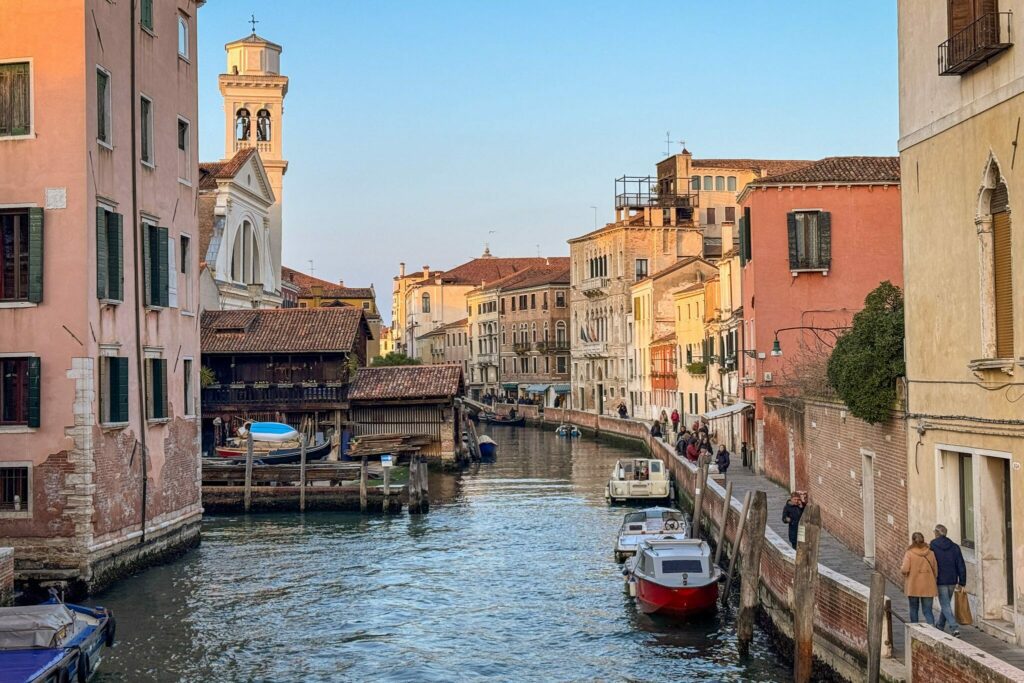
Before I, Matt, returned to Venice this spring for the first time in a decade, I was fairly certain I was never going to set foot in Venice again. From my memory of visiting in the middle of August, it was beautiful, yes, but also hot, crowded, and somewhat miserable.
However, when I was searching for a place to spend a few days in the early spring before meeting up with family to visit Rome and Florence (again), I landed on Venice.
As we’ve covered, one of our favorite parts of exploring Italy is the country’s regional diversity. As you move from one region to another, everything – from the food and wine varietals to the accents and dialects – changes.
After Rome and Florence, which are relatively similar as far as Italian regions go, Venice has a completely different look and feel.
The first thing I think every single time I approach Venice is “whose bright idea was it to build a city here in the middle of this lagoon?” The answer is the coastal residents who were tired of the Germanic tribes (who weren’t particularly adept at navigating on the water) coming down from beyond northern Italy and bothering them.
The Venetian Republic rose to prominence on the back of its naval prowess and, at its height, was one of the biggest powers in the Adriatic and Mediterranean, controlling territory as far south as Cyprus.
Because of their reliance on trade with the eastern Mediterranean (think Greece and Turkey and that part of the world), the architecture and art in Venice is heavily influenced by works by the Byzantines (which you’ll see at St. Mark’s Basilica – more on that below), which is a different flavor than what you get in Rome or Florence.
Plus, the fact that Venice was involved in the crusades in the 12th and 13th Centuries means that they got to go home with a bunch of plunder after the conquest of Constantinople in 1204, and you see it all around Piazza San Marco.
The four horses over the doors of the cathedral, a statue of St. Mark, various columns (the reason they’re all sort of different is because they were, uh, “repurposed”).
So, the point is that while Venice can be hot, humid, and crowded (not in the winter and spring!), it’s also beautiful, interesting from a historical and cultural perspective, and perhaps the most unique place in all of Italy because of the way it was constructed.
Let’s talk about how to make the most of your time in Venice.
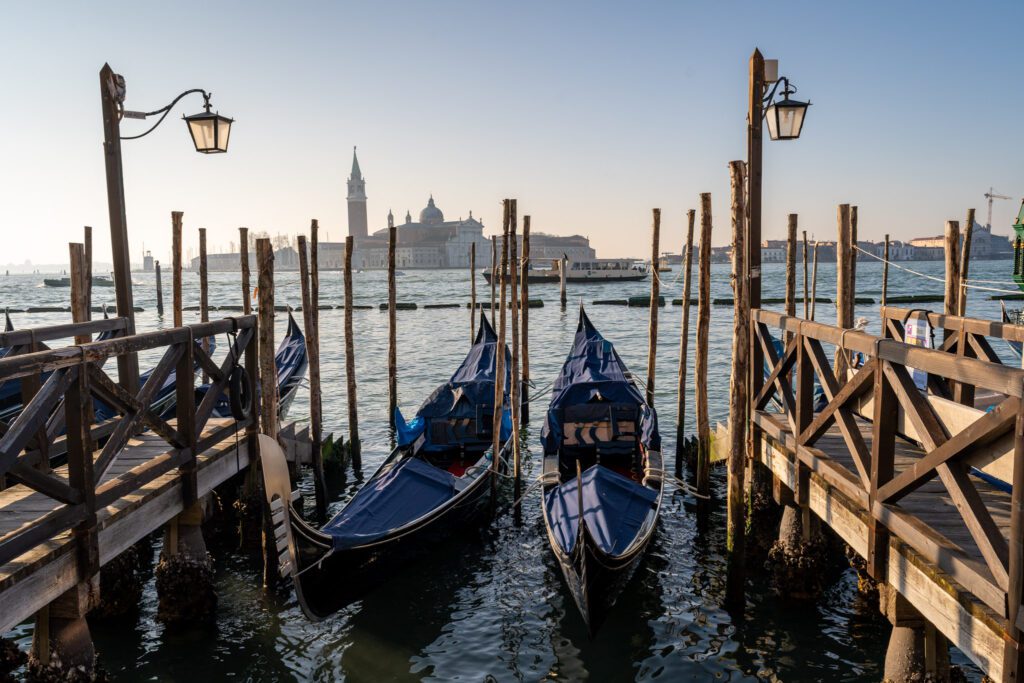
Getting from Florence to Venice
The high speed train ride from Florence to Venice is an easy one, taking around two and a half hours. You’ll want to book a direct train to avoid transfers or delays that might take extra time.
You’ll leave from Santa Maria Novella (Firenze Santa Maria Novella) in Florence, and arrive at Santa Lucia in Venice (Venezia Santa Lucia).
From the train station in Venice, you can either walk or take the water bus, known as the vaporetto, to get to your accommodations.
It depends on where you’re staying, and it’s worth noting that central Venice is car-free, so there is no option to take a taxi from the train station to wherever you’re staying.
What to Do in Venice
Here are some things that we think you definitely shouldn’t miss while you’re in Venice. For more (both more things to do and more detail behind the things below), head over to our guide to the best things to do in Venice.
We also have a guide to spending three days in Venice which, conveniently, lines up with the amount of time we have dedicated to the city in this itinerary.
St. Mark’s Basilica (Basilica di San Marco)
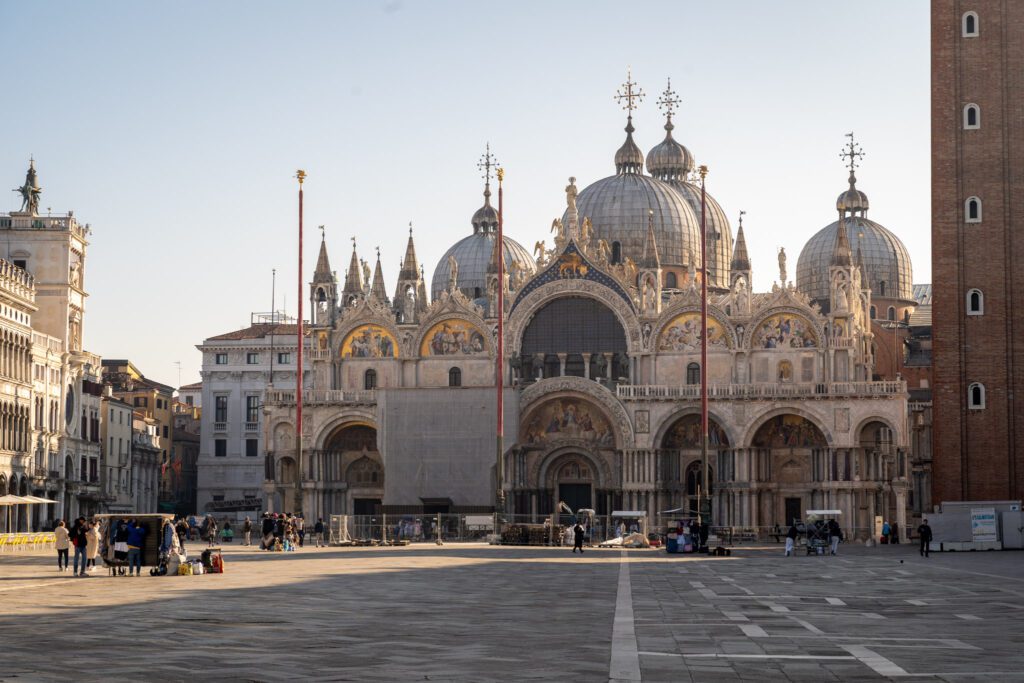
This church is magnificent. On my latest trip to Italy, I got to see St. Peter’s Basilica in Rome, the Duomo di Firenze, and St. Mark’s Basilica in Venice.
This basilica was my favorite of the three, though that might be influenced by the fact that I had seen the other two more recently, and it had been nearly a decade since I had set eyes on the golden mosaics covering every inch of the ceiling of the church.
We don’t have time for it here – read our Venice itinerary for more historical context on the basilica – but I love the origin story of the basilica, specifically how they got the relic (St. Mark’s body) to make it official.
I did this after hours guided tour of the Doge’s Palace and Basilica di San Marco, and it was a completely different experience than I’ve ever had visiting those places on my previous two trips.
We were literally one of two or three groups inside each place, which is a far cry from the hundreds (maybe thousands?) of people who are inside at peak times.
It’s also worth noting that I never would have been able to understand what exactly I was looking at without our guide, Romi, who explained the history and design and architectural elements in exhaustive detail (not to be confused with exhausting detail).
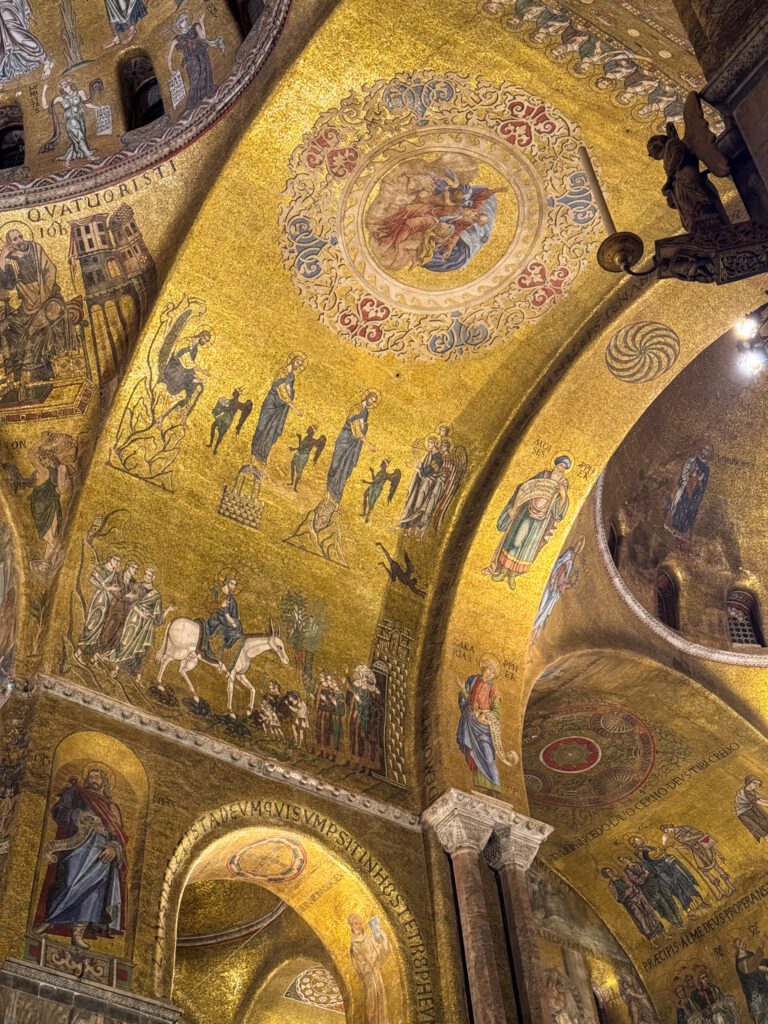
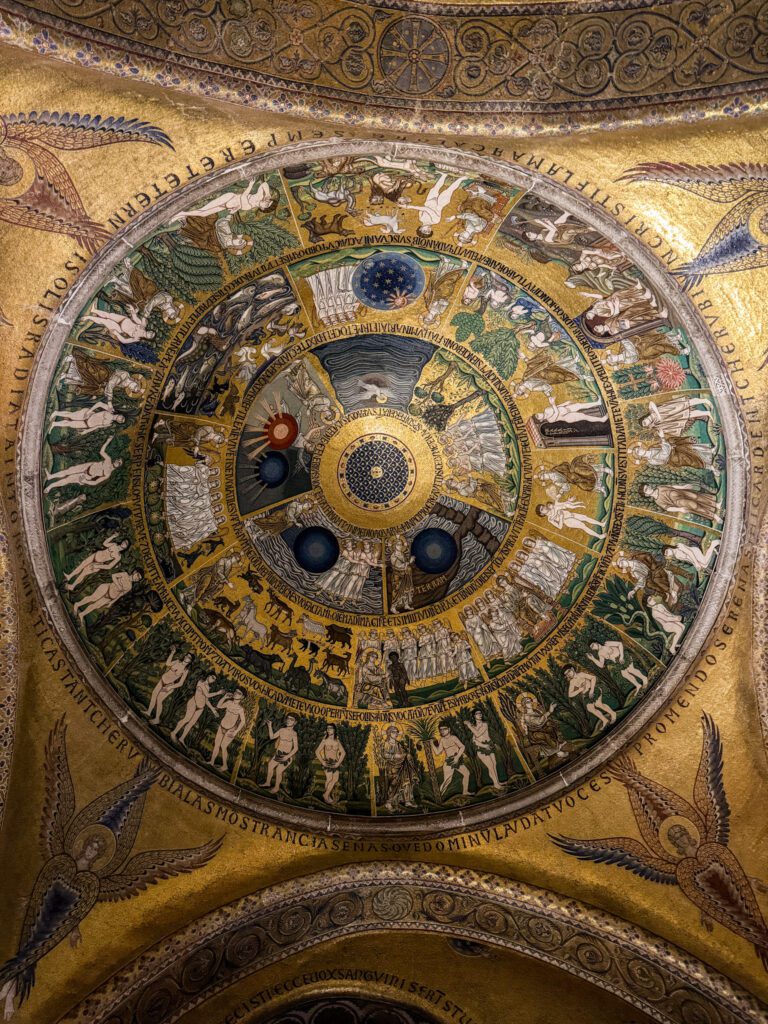
They also have a separate after hours tour specifically for the basilica, which splits the tour I did in half (and skips the Doge’s Palace).
If you’re going to visit on your own, it’s worth paying the extra cost (and sacrificing flexibility) to book in advance on the official website and skip the ticket office line, which can take a bit of time during the peak season.
The Doge’s Palace
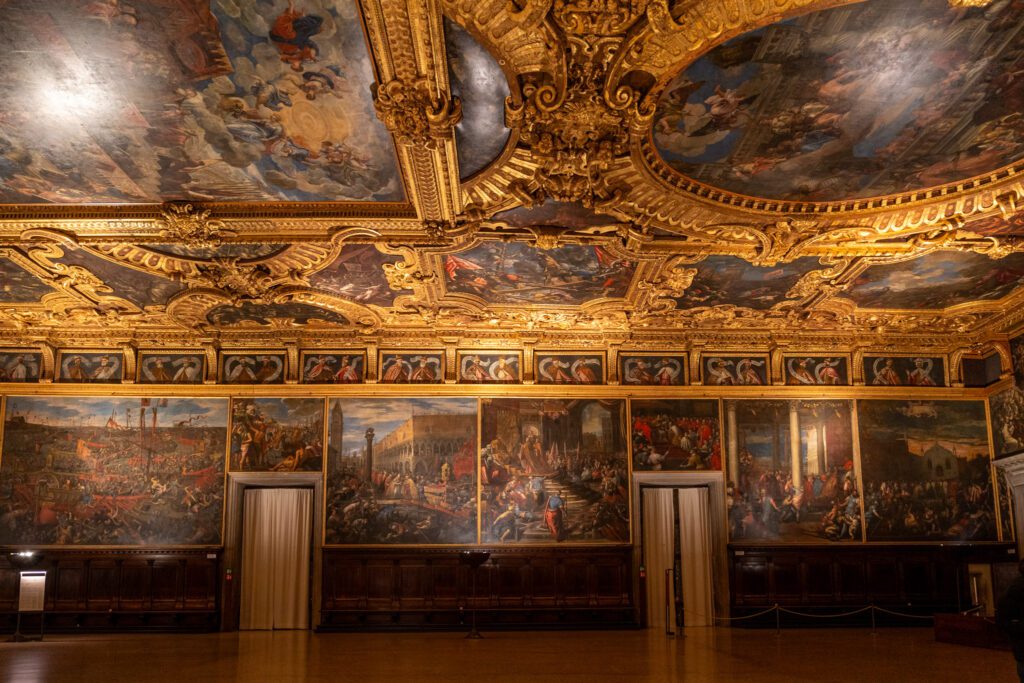
Piazza San Marco, where you find both the Basilica di San Marco and the Doge’s Palace next door to each other, was both the political and religious (funny how they go hand in hand) center of the Republic of Venice.
The Doge, roughly equivalent to the duke or mayor in English, lived and worked here, and it’s equal parts residence, offices, and prison.
The basilica is cool because of the art and architectural elements, and while the Doge’s Palace has its fair share of that too with its beautiful painted ceilings and ornate golden trim, it’s more interesting from a political perspective.
The interior is incredibly ornate, especially in the Grand Council chambers, with dark wood, plenty of gold, and the trademark colorful frescoes that you’ll find all over Venice (the Venetian painters LOVE their bright colors and textured fabrics) painted by legends like Tintoretto and Titian.
This is, as the saying goes, the room where it happened.
If you’re American, it’s like the White House (the Doge’s apartments were here) and Congress put together – with a little bit of Alcatraz thrown in for good measure.
If you have limited time, money, energy, or interest, and you have to choose between the Basilica and Palace, I’d choose the basilica every time because of the intricate mosaics (think about the work of installing all of them!).
If you want to visit the Doge’s Palace on your own, you’re definitely going to want to buy tickets in advance. Especially because the ticket price is €5 cheaper if you book more than a month in advance (€25 if you buy more than 30 days in advance, €30 if you buy within 30 days).
The official website for the Palazzo Ducale is here, and you can buy tickets directly through them.
The other thing to know is that the public opening hours on Friday and Saturday are extended to 11pm between May 1st and the end of September (basically, peak season) and it is generally much less crowded in the evening hours.
If you’re looking for a way to see the palace without all the crowds you’ll encounter during the day, that’s a good option.
See Venice from the Water
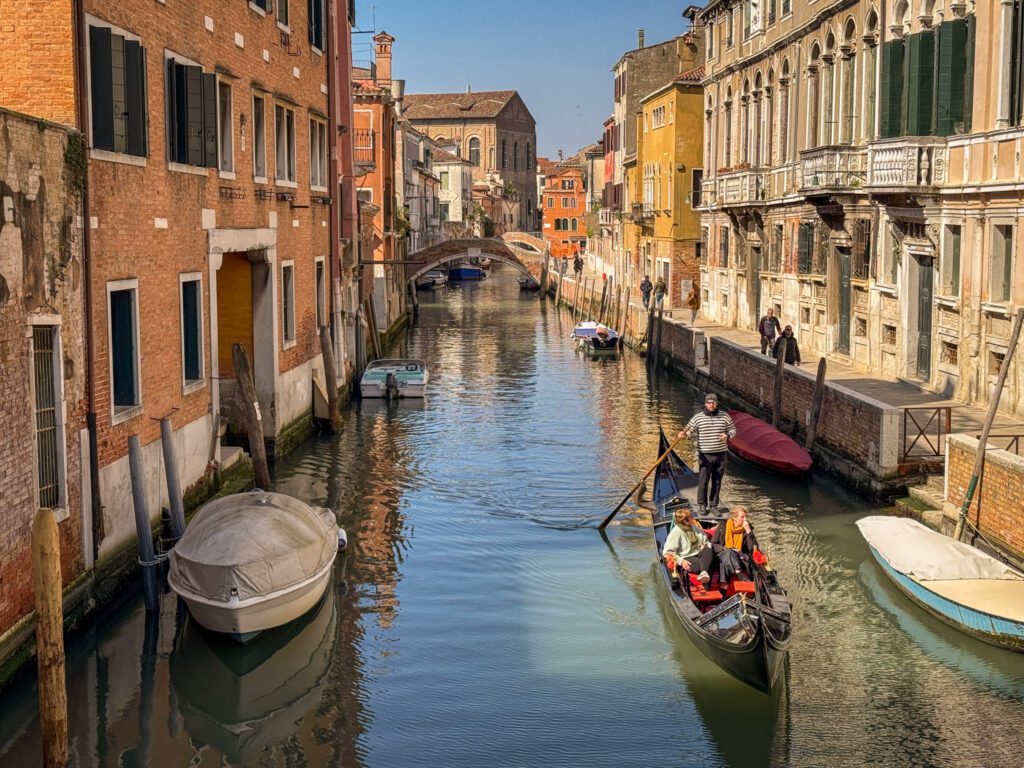
After an excellent canal cruise in Amsterdam, another European city that is built on the power of water with its numerous canals, I think that seeing the city from the water is an essential piece of any itinerary for Venice because it offers a completely different perspective.
However, I’m hesitant to recommend hopping on one of the innumerable tourist gondolas that you’ll find all over the city, with their “drivers” in striped shirts and berets because I don’t think it offers a whole lot of insight into the city AND your experience is going to vary wildly based on the gondolier you get and where you pick up the boat.
Generally speaking, we think there are three options to get out on the water and see Venice from a different perspective.
First, the public waterbus (the vaporetto), which is relatively affordable and accessible, but does only really stick to the bigger canals (which means you miss the magic of the smaller, less-trafficked canals in Venice).
Second, the stereotypical gondolas that you see all over the city. We’re not going to get into whether or not this is worth it, because that’s a personal choice, but it is a unique experience.
The price of a gondola ride is regulated throughout the city and, at the time of writing, a daytime gondola ride (9am to around 7pm) is set at €90 for a 30 minute ride, while an evening gondola ride is priced at €110 (for a 35 minute ride). Don’t pay more than that for those durations and times of day!
Also, that price is per boat (usually a max of five people per boat), not per person, and this is going to be what you might call a “private” gondola, meaning you and your companions are the only ones in the boat (with the gondolier, of course).
Last is to join a guided tour of the lagoon by shared boat.
If you don’t care so much that the boat is specifically a gondola, a shared boat ride is likely going to be a better overall experience – a better value (you might pay slightly more per person, but get ~3x the time on the water), better storytelling (to learn about Venice’s history and culture), and better comradery with other travelers interested in the same things as you.
Personally, this would be my choice between the two organized options (the other being the private gondola), but that should check out if you’ve spent any time at all in this corner of the internet.
Explore Venice’s Less-Visited Neighborhoods
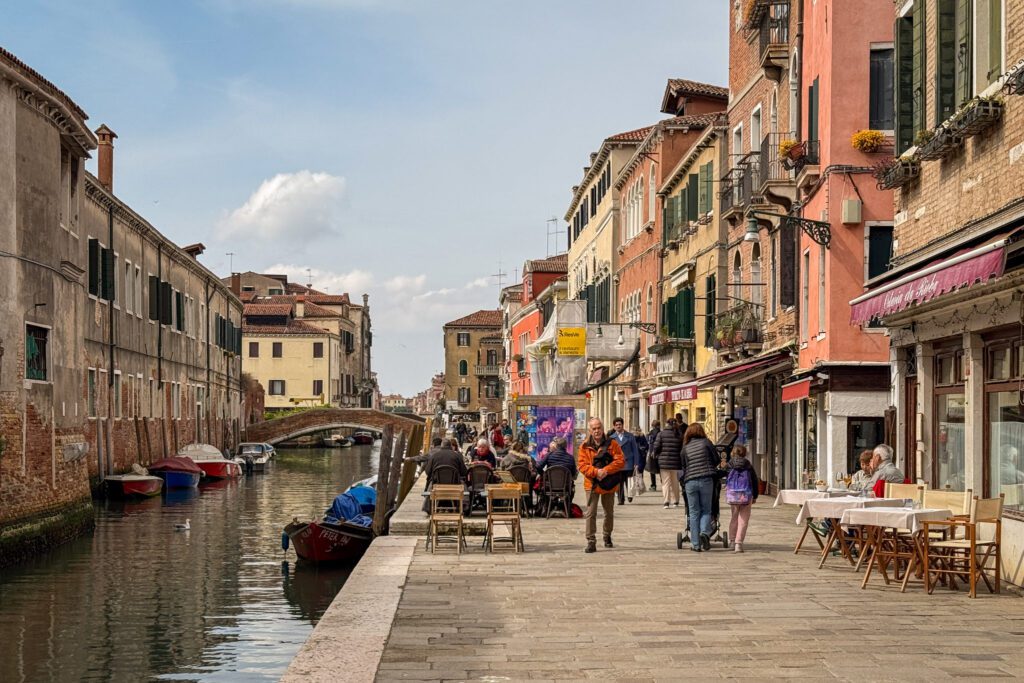
90% of tourists spend all of their time in the corridor that leads from the train station to Rialto Bridge to Piazza San Marco, never straying from that well-worn path.
Knowing that, it’s really no wonder that people view Venice as crowded and inauthentic!
I had multiple experiences throughout my few days in Venice on this most recent trip where I found myself in Venice’s other neighborhoods walking several blocks, crossing canals, and not seeing another soul.
All it took was wandering a few blocks off of the main street in the area to find that peace and quiet.
Venice is broken up into six sestieri (which can be roughly translated to “districts”), and the vast majority of people spend their time exclusively in San Marco.
Of the six, there are three that I found myself drawn to, and they form a spine down the center of the city. They are Cannaregio (the northern end of the city), San Polo (the eye of the storm in the center of the city), and Dorsoduro (the southern end of the city).
We’d make sure to spend some time in each of those places, because even at peak times in Venice, they’re relatively quiet compared to the stretch between Rialto Bridge and Piazza San Marco, and they’re packed with great places to eat, drink, and wander.
Experience the Wonders of Cicchetti + Spritz
Of all of the food options in Venice, which are heavily influenced by the lagoon and the bounty of fresh seafood, the most unique aspect of Venice’s food culture is the cichetti.
These are mostly consumed in the afternoon (between lunch and dinner) and come in several forms, kind of like tapas and pintxos in Spain.
Sometimes, it’s a bite-sized portion of a dish that would usually be served in a bigger format, other times it’s basically a slice of bread topped with some sort of cheese, meat, or seafood.
They’re meant to be eaten in one bite, maybe two, and are usually consumed alongside either a glass of wine or a spritz – a delightful combination of bitter liqueur, sparkling wine, and sparkling water.
When it comes to the liqueurs involved, they’re a balance between sweet and bitter.
Orange-hued Aperol is the one you see most often and is the sweetest, while red-hued Campari leans more bitter, and local’s favorite Select is somewhere in between.
One way to explore the food scene in Venice is by taking a tour that takes you to various bacari (somewhere between a wine bar and a tavern) to sample cicchetti and learn about the history and culture of the city.
We’d choose this tour through Dorsoduro (though gluten means Matt can’t usually do tours like this).
Where to Stay in Venice
The first thing you need to know here is that we strongly recommend staying in the city of Venice itself, rather than on the mainland (which is connected by train, but adds time and complexity to your visit).
It is absolutely going to be cheaper to stay on the mainland, but you’ll miss out on the easy access to the city in the early morning and late evening, which is (as we’ve already mentioned) the best time to be in Venice.
The second thing you should know is that we don’t really recommend staying anywhere near Piazza San Marco because it is a ZOO, and it’s where the vast majority of tourists tend to congregate.
For more detail behind these recommendations, make sure to read our guide to where to stay in Venice, which covers our recommendations on the best places to stay for first timers (with pros and cons for each to help you make your decision).
On my (Matt here) latest trip to Venice, I stayed in San Polo (at Palazzo Morosini Degli Spezieri) because it is almost the exact center of the city – which means it’s walkable to just about everything – and I would not hesitate to recommend it.
If you’re looking for a more budget-friendly option in the same neighborhood, look at Ca’ Angeli or Ca’ Riza, two guesthouses with excellent reviews.
If you want something a little quieter with a younger vibe, stay in Dorsoduro. This is where multiple people told me to go around sunset to wander around and eat cicchetti.
It’s a neighborhood where people actually live – a rarity in modern day Venice – and is centered around the university, which gives it a nice youthful vibe.
If you want to stay on the water at the southern edge of the city, look at Palazzo Veneziano.
For something a little more value-oriented, look at Cà Santo Spirito, which is a quiet location with nicely designed rooms.
What to Do with More Time in Italy
If you have more time in Italy, here are the things we’d add (along with how much time you need to add them).
We also have an in-depth guide to planning a 14 day Italy itinerary, if you happen to have two weeks to spend. There are even more ideas on what to do with more time there.
More Time in Bologna (+1-2 Days)
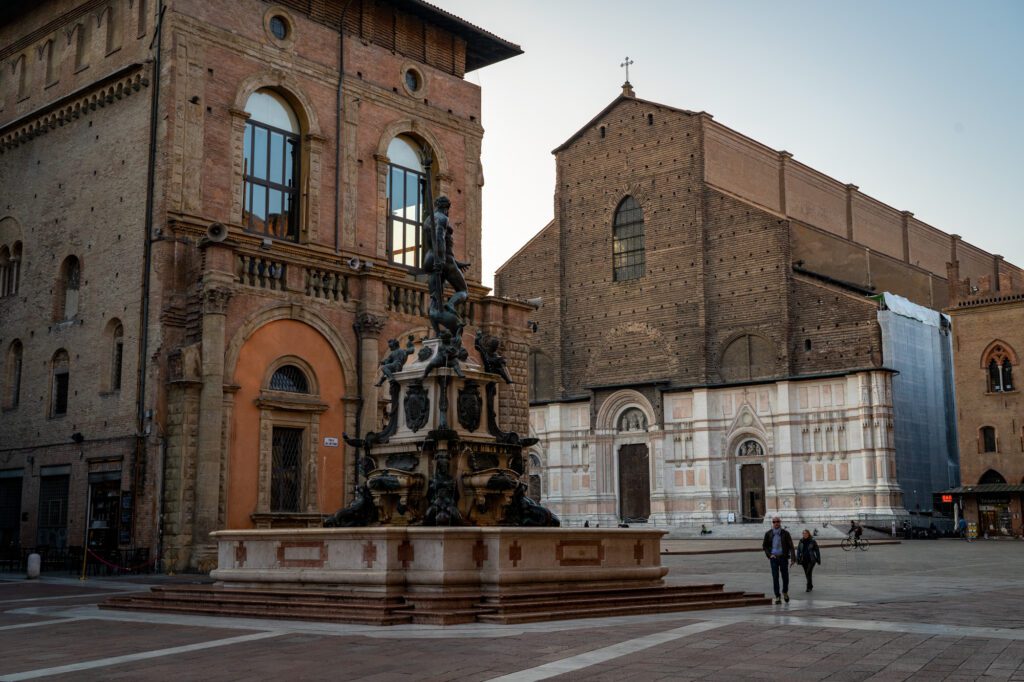
If we’re being completely honest, we would completely skip Venice and spend that extra time in Bologna (or Milan, or Verona), but that’s partially because we’ve seen Venice already, and don’t feel a great need to see it again.
Bologna is, hands down, our favorite city in Italy.
Matt plays a lot of soccer at home in Portland and occasionally wears his Bologna FC jersey, and roughly every other time someone recognizes it and says something to the effect of “is that a… Bologna jersey?”
That conversation usually evolves into some version of Matt telling the person that Bologna is his favorite city in Italy and, on occasion, meeting someone who has lived in Bologna and 100% agrees with that statement (almost always because of the food).
Bologna is the best food city in Italy, mostly because the region it is the capital of – Emilia Romagna – is the birthplace of many of the Italian ingredients that you know and love.
Prosciutto di Parma, Parmesan-Reggiano, Balsamic Vinegar di Modena, lambrusco (a lovely sparkling red wine, traditionally a dry wine) all come from Emilia Romagna, which is the region immediately to the north of Tuscany.
You could – and Matt has – spend the better part of a week eating and drinking your way through this part of central Italy, and it actually makes a great home base for exploring other parts of the country because almost every high speed train makes a stop in Bologna, which is at the crossroads of two main high speed rail lines running north-south through Italy.
We love Bologna, and it’s certainly worth more than a day trip. If you have an extra day or two to spend in Bologna, eating and drinking your way through the youthful, vibrant city, you won’t regret it.
To plan your extra time, use our guides to spending 2 days in Bologna, and our guide to where to stay in Bologna.
Milan (+1-3 Days)
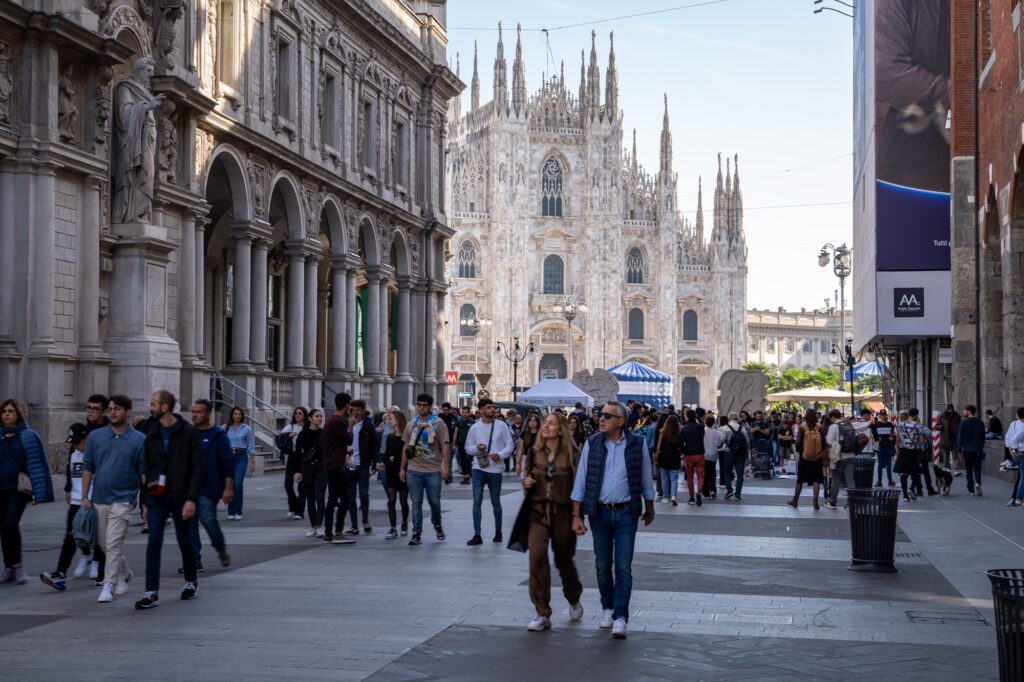
Of the destinations we could have added to the main itinerary in place of Venice, Milan is a strong second contender for a couple of reasons.
First, it’s yet another contrast from Rome (and Florence) in that Milan feels significantly more modern and cosmopolitan than those cities.
There are multiple reasons for this, including but not limited to the wealth in northern Italy (Milan is the financial capital of Italy AND the home of all the Italian fashion brands), the fact that it was seen as sort of a backwater back in Roman times, and the fact that it doesn’t follow stereotypical Italian stereotypes (they swap out pasta for rice, which grows in a prolific fashion in the swampy areas outside of Milan).
Second, the Duomo di Milano is worth visiting Milan for. It was constructed over hundreds and hundreds of years, which is why it’s sort of a mishmash of architectural styles (it started in the 14th Century and only finished in the mid-20th Century).
Fun fact: Napoleon crowned himself king of Italy here (there’s a tapestry inside depicting the scene), and there’s a plaque that commemorates that that I saw, said “wait, Napoleon did what now?”, and found myself in a rabbit hole of the history of Napoleon for the next 12-18 months.
Third, Milan’s airport (really, airports, because there are two main airports just outside of Milan) is the second best international airport in the country in terms of connections, so it’ll likely be an easier flight home.
Anyway, the point is that Milan is a pretty fascinating city with a good food and drink scene – that features far more global cuisines than you’ll find in Rome, Florence, or Venice – and offers a slightly different look at the diverse history and cultures that you’ll find in Italy.
We think 1-2 days is enough, and you can add another day to do a day trip to somewhere like Lake Como or Torino.
Guess what? We have a bunch of guides to help you plan a short trip to Milan!
We have a guide to spending a day in Milan, which fits the main highlights (including the Last Supper) into one action-packed day.
We also have an extended guide to 2 days in Milan, which is a similar itinerary at a more relaxed pace.
Last but not least, we have a guide to choosing the best place to stay in Milan based on your particular style and budget, which will be helpful in deciding where to base yourself for your trip.
Tuscany (+2-7 Days)
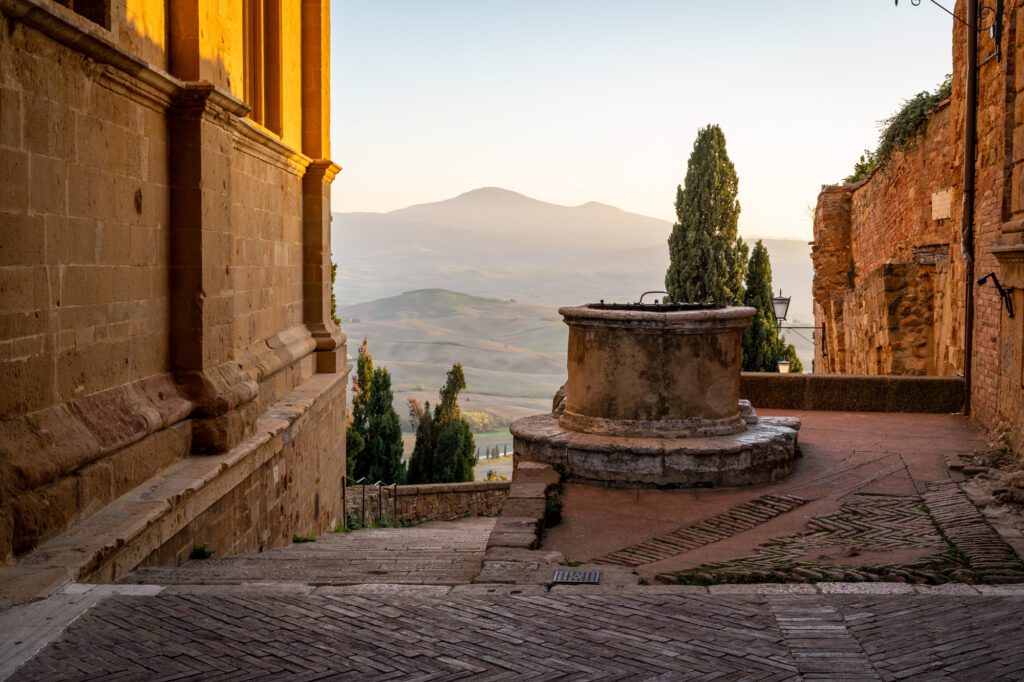
Florence, which you already have a nice chunk of time in, is the capital of Tuscany, and it’s worth tacking on anywhere from 3-7 extra days to explore the rest of the region.
A few years ago, Matt spent a week in Tuscany with his mom for her 60th birthday, and we both fell in love with the region (despite the fact that the wine in Tuscany is not our type, for the most part). However, the food and the vibe – that dolce vita – is definitely our thing.
Tuscany is a relatively large swath of land that, unbeknownst to me until I was standing in Volterra looking at the coast, spans all the way past Pisa to Italy’s western coast.
However, the part of Tuscany that you probably picture in your mind is the Val d’Orcia, which is just southeast of the city of Siena (also worth a visit) and is where you’ll find the towns of Montepulciano, Montalcino, and Pienza (our personal favorite of the three).
If you’re interested in rolling hills (that are sometimes green, sometimes golden depending on the time of year), cypress trees, excellent red wine, and rustic, rich food, this is the place for you.
On the eastern end of Tuscany, you’ll find the tower-filled town of San Gimignano and the hilltop town of Volterra (made famous by the Twilight saga) with its Etruscan roots and Roman ruins.
Lucky for you, we have an entire guide dedicated to planning a Tuscany itinerary that you can use to figure out what to see with the number of days you have.
Here’s an overview:
- With 1-2 days, do Siena.
- With 3-5 days, add the Val d’Orcia (and rent a car).
- With 6-7 days, add San Gimignano and Volterra
Sicily (+7-14 Days)
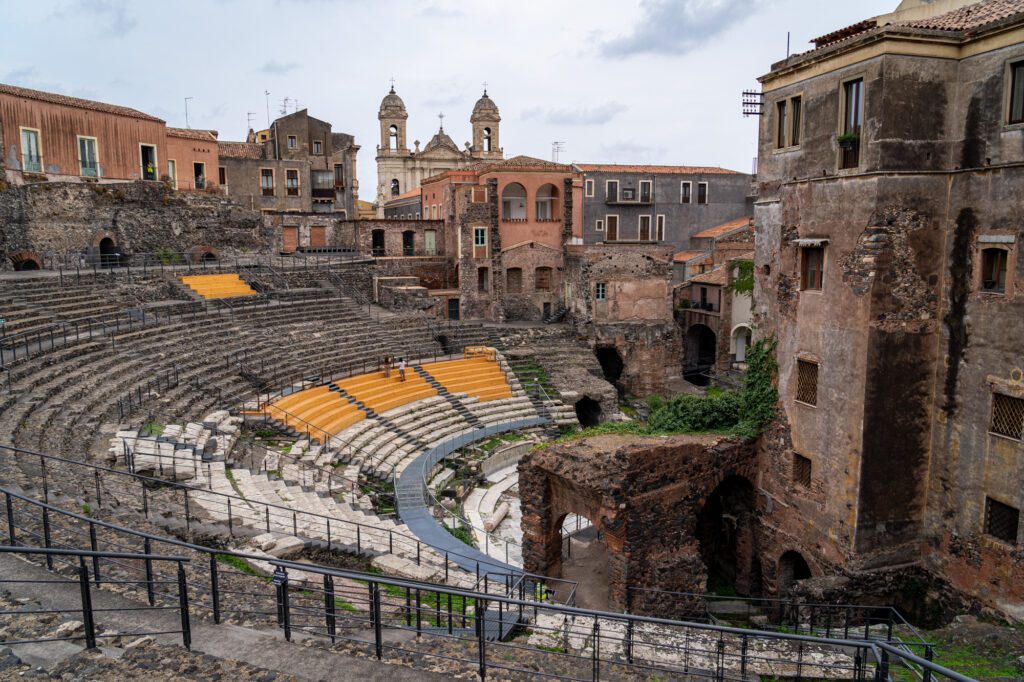
Alysha’s dad’s side of the family immigrated to the United States from Sicily two generations back (so Alysha’s grandfather was born in Sicily), and Matt’s grandfather’s parents were also born in Sicily (here’s hoping we’re not distant relatives).
We decided to spend a really nice chunk of time in Sicily a few years ago, and found ourselves marveling at two things.
First, the sheer size of Sicily. Even with three weeks, we spent hours of our Sicily trip driving through towns and past beaches that, I’m certain, were beautiful and worth seeing.
Second, the sheer amount of history in Sicily. There are innumerable ruins in Sicily, ranging from Greek to Phoenician to Roman to Norman. Combine that history with the beautiful landscapes and the towering mass of Mount Etna and you’ve got yourself a beautiful place to spend a week or two (or more, if you have it).
Here’s our biggest tip for Sicily: we would strongly suggest limiting yourself to one part of the island if you have anything less than a week.
If you only have a week, we’d spend it on the southeastern coast around Catania, Siracusa and Ortigia, and Taormina, with day trips inland to Noto and Mount Etna.
Lucky for you, we have an entire guide dedicated to planning a week in Sicily, focused on that southeastern corner. We’d read that for more detail on how to plan a shorter trip.
With two weeks or more, expand your trip to the rest of the island. Our favorite spots in Sicily were the Val di Noto, Agrigento, and Palermo, and we have a longer guide to planning your Sicily itinerary for a trip of 10-21 days.
Cinque Terre (+2-4 Days)
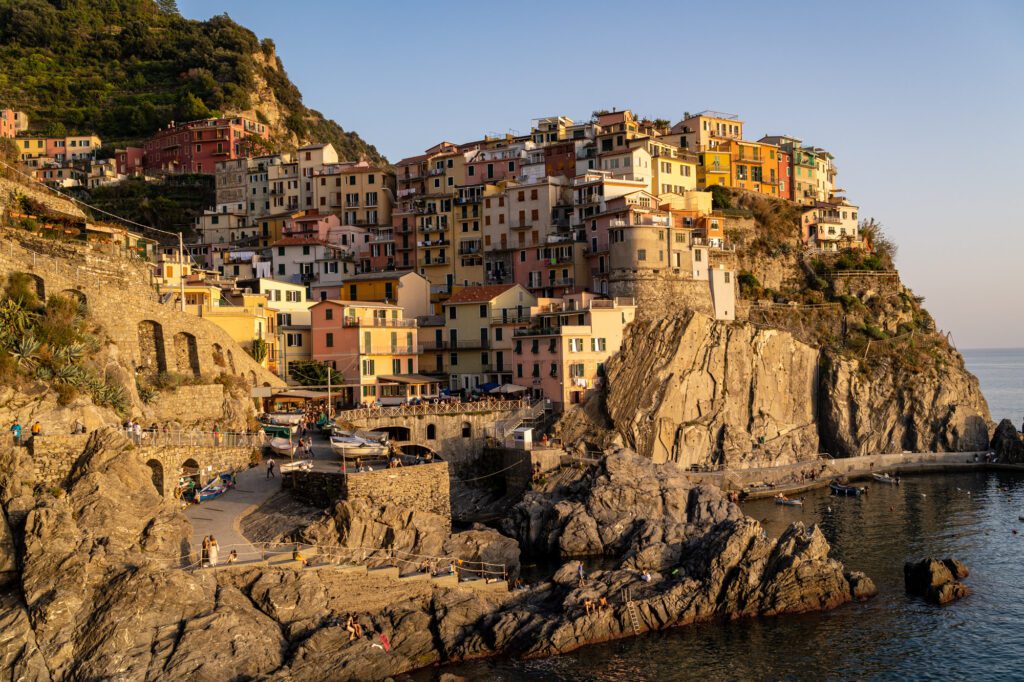
Similar to Venice (and the Amalfi Coast), we have mixed feelings about the Cinque Terre (which means “five towns” in Italian because the area is a chain of five coastal towns just north of Spezia).
On one hand, it’s pretty obvious why people are drawn to this tiny slice of coastal paradise (and why it is a Unesco World Heritage Site). It’s beautiful and dramatic, with steep cliffs and narrow coastal walkways bringing you to towns set into the cliff sides with colorful houses and wonderful sea views.
On the other hand, it’s also pretty obvious that the infrastructure here is really not meant to have thousands of people per day flooding each of the five towns that make up the Cinque Terre.
This is another place that we’d only recommend if you have two or more days.
Partially because it’s a pain to get to from anywhere in Italy (which means a day trip is probably off the table), partially because it’s a place that, like Venice, you need to have the early mornings and late evenings to truly appreciate, when all the day trippers have exited the towns and they’re (relatively) quiet and peaceful.
On that 60th birthday trip with my mom a few years back, we picked up my brother and spent four days in Cinque Terre, and I think that’s probably the right amount of time to spend here.
There are some great hikes, some great sunset viewpoints, and some good food and wine to be had.
Rather than cover it all here, we have separate guides to planning a Cinque Terre itinerary (including all the logistics), a guide to our favorite things to do in Cinque Terre (for first timers), and a guide to the best places to stay in Cinque Terre.
We’d head over to those guides to plan a side trip to the Cinque Terre to add onto the main itinerary (and we’d do it between Florence and northern Italy – Milan is the easiest major city to reach Cinque Terre from).
What to Do with Less Time in Italy
If you find yourself with less than 10 days, we’d strongly recommend reducing the amount of ground you plan on covering in Italy.
With 8-9 days, we’d go ahead and cut some of the day trips from either Florence or Venice and focus instead on seeing the cities themselves.
With 7 days, you have two options, and it depends on what you’re looking for out of your trip to Italy.
Your first option is to follow our 7 day Italy itinerary, which is basically a more fast-paced, condensed version of this itinerary that has you visiting Rome, Florence, and Venice over the course of a week.
Your second option would be to split your time between two cities, use them as a base for day trips, and move a little slower. You could do something like Rome and Florence (or Bologna) and cover a lot of ground in central Italy.
With five or six days, we’d opt to split time between Rome and Florence, basically following the first chunk of this itinerary as written with three (ish) days in Rome and Florence.
Anything less than five days? Spend your time in one city (we’d do either Rome, or Bologna as a wildcard) and use it as a base to do day trips from (you could do a day trip from Rome to Florence if you really wanted).
Planning a trip to Italy? We’d love to help!
Here are our other Italy travel guides to help you plan an incredible trip (even if you have to eat gluten free!).
If there’s no link below, it means we’re still working on it – long, in-depth guides take time! We’re working on it, though, we promise.
If you’re planning a trip and you’re not sure where to start, your first stop should probably be one of our detailed itineraries.
We have a two week Italy itinerary that blends the main cities with some less-visited cities that we love (BOLOGNA!), a guide to spending 10 days in Italy that focuses mostly on the highlights, and a whirlwind guide to spending one week in Italy that features the Rome – Florence – Venice highlight circuit.
We also have a guide covering important tips for traveling to Italy for the first time, which is a collection of things we’ve learned over the course of our time in Italy that will help you have a smoother, more immersive trip.
Here are more specific guides to the main cities in Italy.
Rome
- What to do in Rome (as a First Timer)
- How to Plan an Amazing 4 Day Rome Itinerary
- Where to Stay in Rome: A Complete Guide for First Timers
- 26 Things to Know Before You Visit Rome
- Gluten Free Rome: A Complete Guide to GF Restaurants + Bakeries
- Where to Find the Best Specialty Coffee in Rome
Florence
- What to do in Florence (as a First Timer)
- How to Plan an Amazing Florence Itinerary (3 Days)
- Where to Stay in Florence: A Complete Guide for First Timers
- Gluten Free Florence: A Complete Guide to GF Restaurants + Bakeries
- Where to Find the Best Specialty Coffee in Florence (for Coffee Nerds)
- The Best Day Trips from Florence (Complete Planning Guide)
Venice
- A Perfect 3 Day Venice Itinerary (for First Timers)
- Exactly What to Do in Venice (As a First Timer)
- Where to Stay in Venice: A Complete Guide
- Gluten Free Venice: A Complete Guide (for Foodies)
Bologna
- What to do in Bologna (as a First Timer)
- How to Spend One Incredible Day in Bologna
- How to Plan an Amazing Bologna Itinerary (2 Days)
- Where to Stay in Bologna: A Complete Guide for First Timers
Cinque Terre
- What to do in Cinque Terre (as a First Timer)
- How to Plan an Amazing Cinque Terre Itinerary (2 Days)
- Where to Stay in Cinque Terre: A Complete Guide for First Timers
Milan
- What to do in Milan (as a First Timer)
- How to Plan an Amazing Milan Itinerary (2 Days)
- Where to Stay in Milan: A Complete Guide for First Timers
- Gluten Free Milan: A Complete Guide to GF Restaurants + Bakeries
The Rest of Italy

Great info, thanks! We are planning a trip next May. Flying to Rome and driving to Pienza for a couple of days, then to Volterra for 3 days ,and then into Florence for 4 and then back to Rome for 4 last days…should be a fun first time trip!
Sounds like a lovely trip! May should be a nice time to be there too. Cheers!